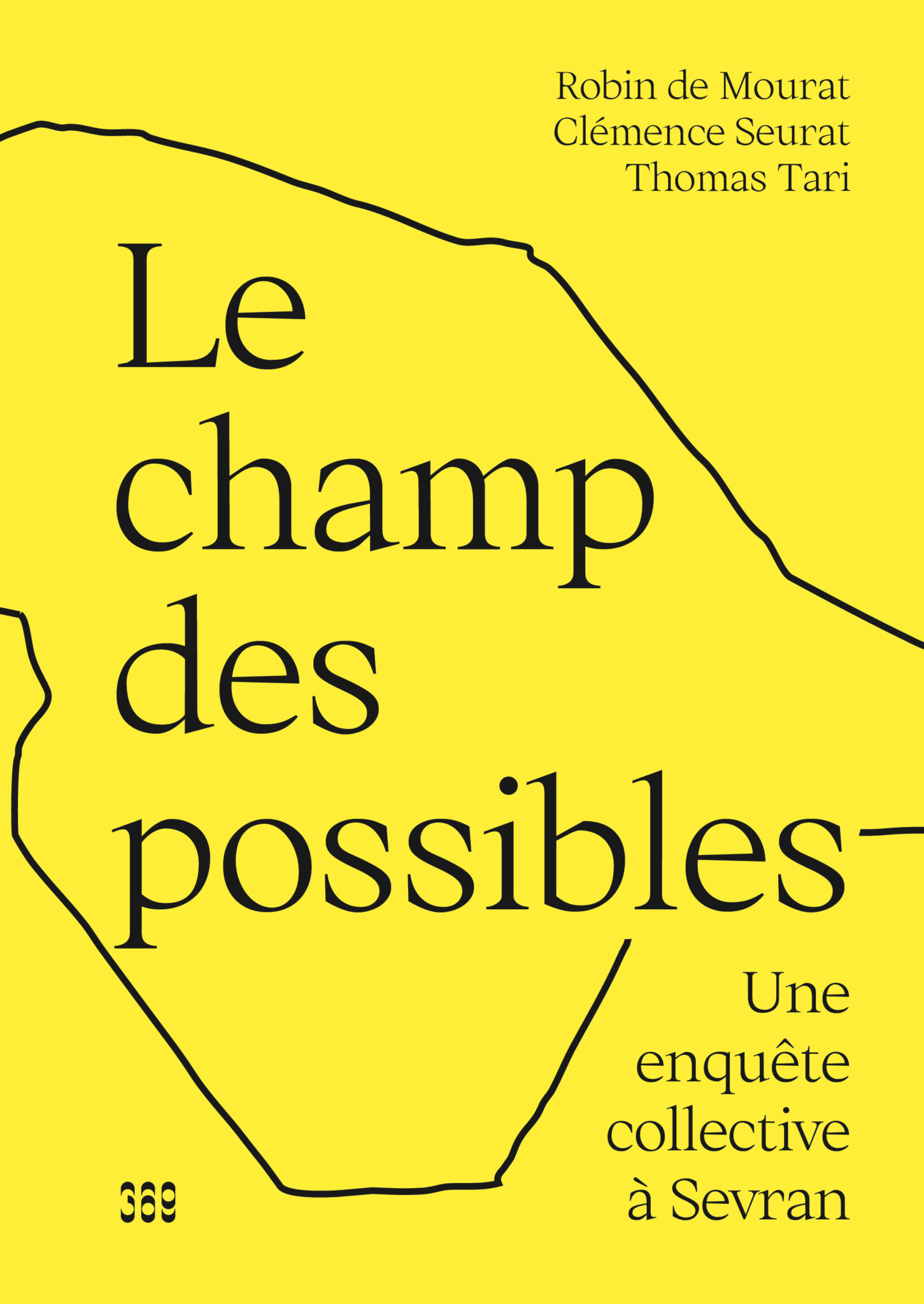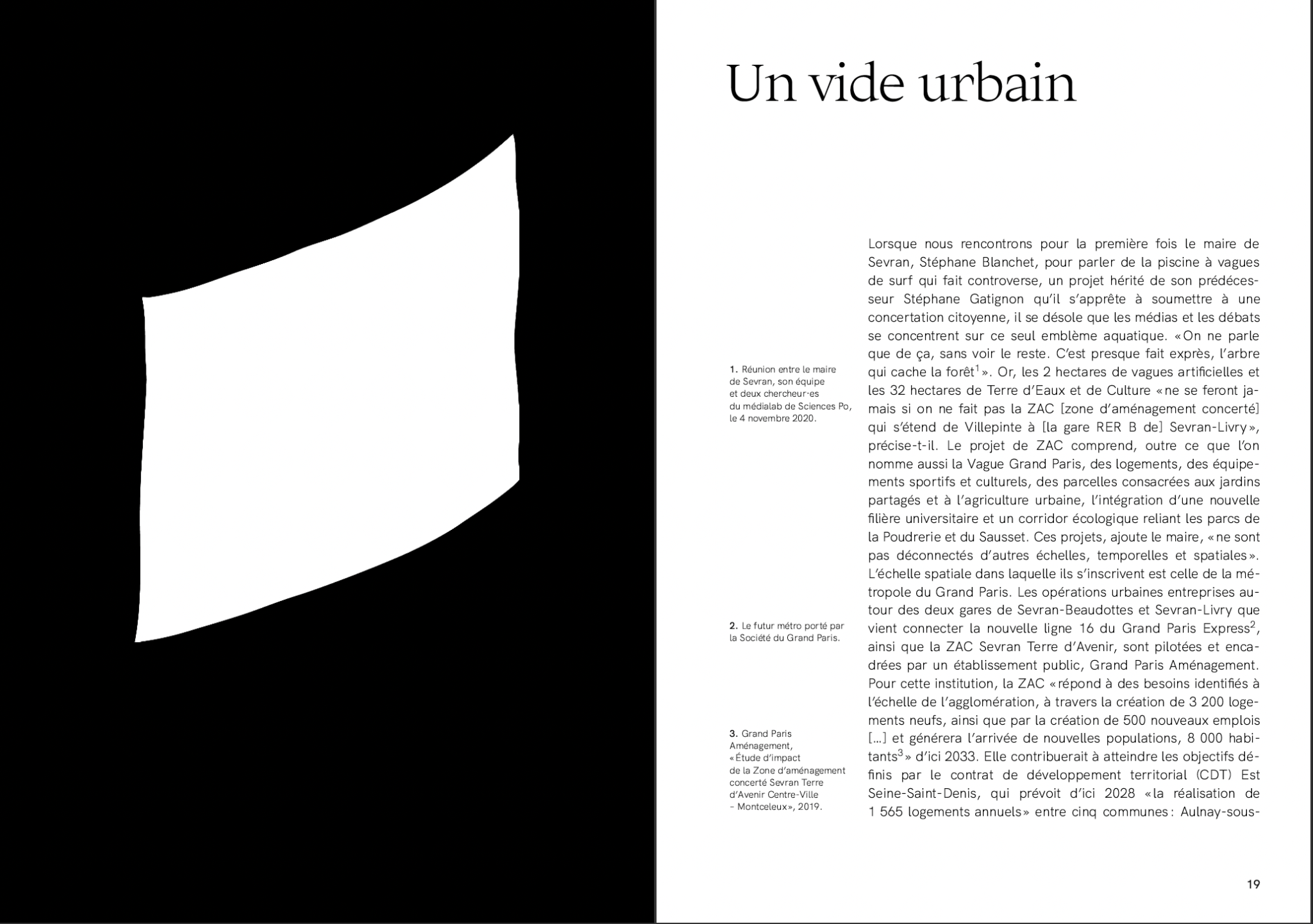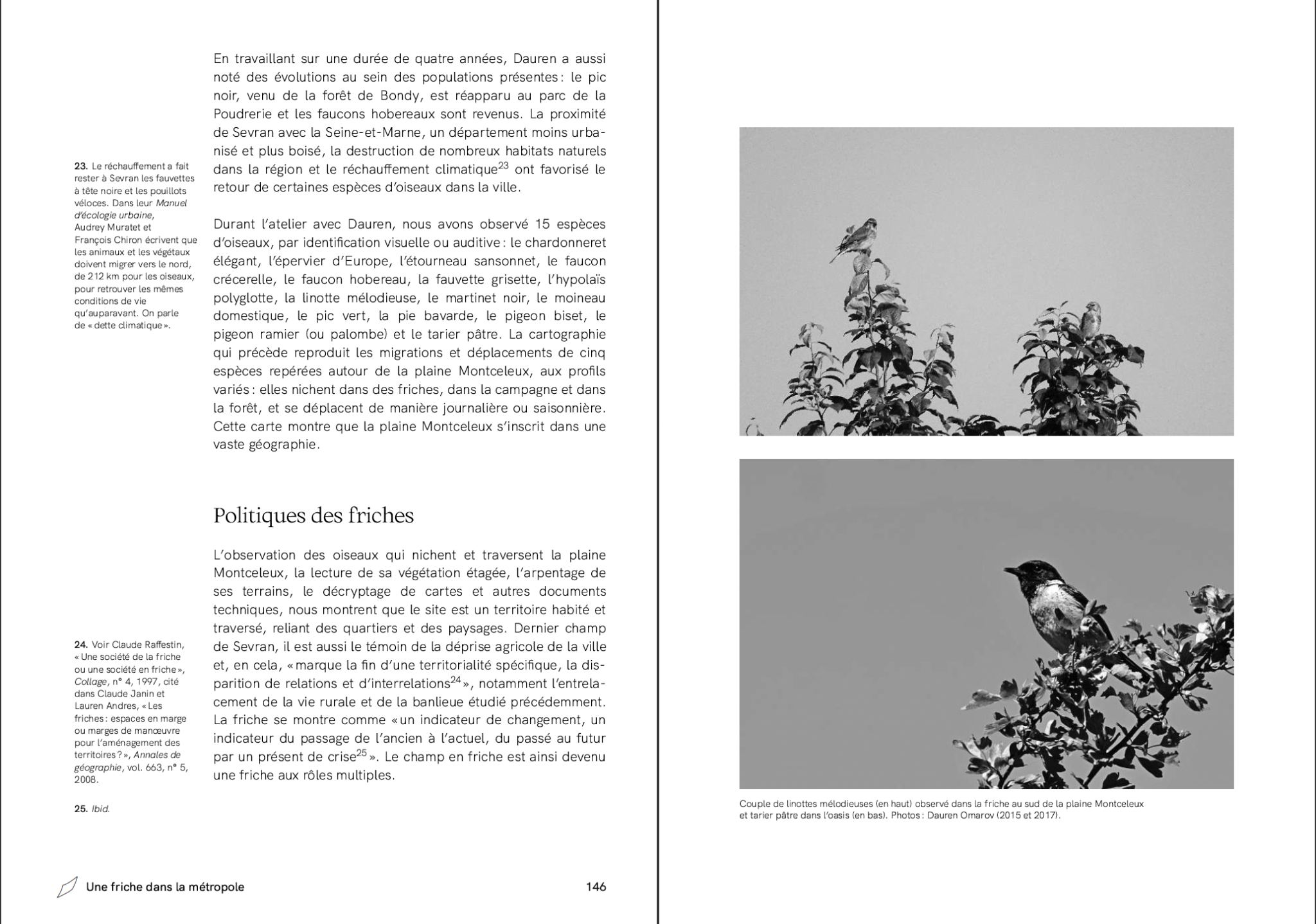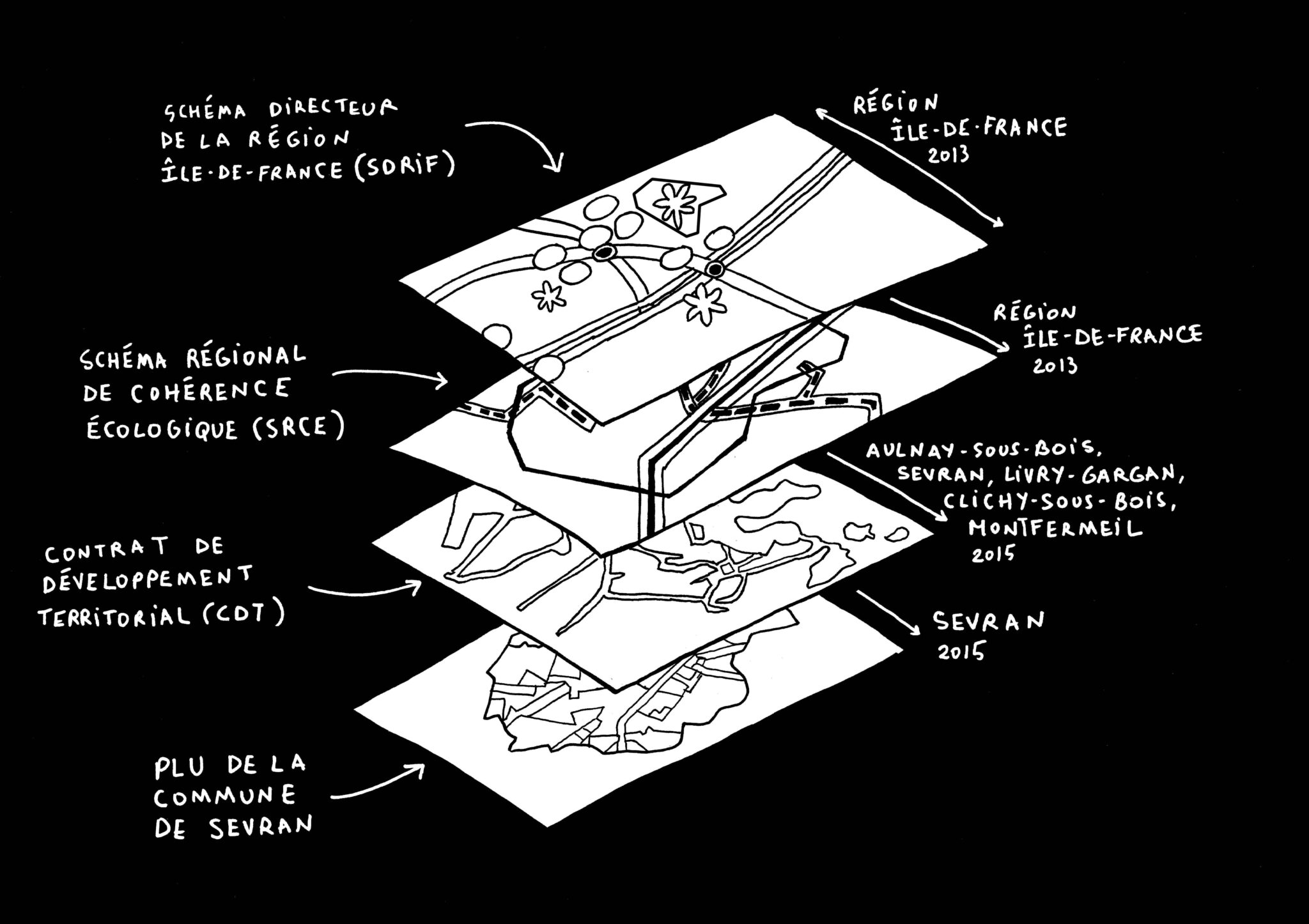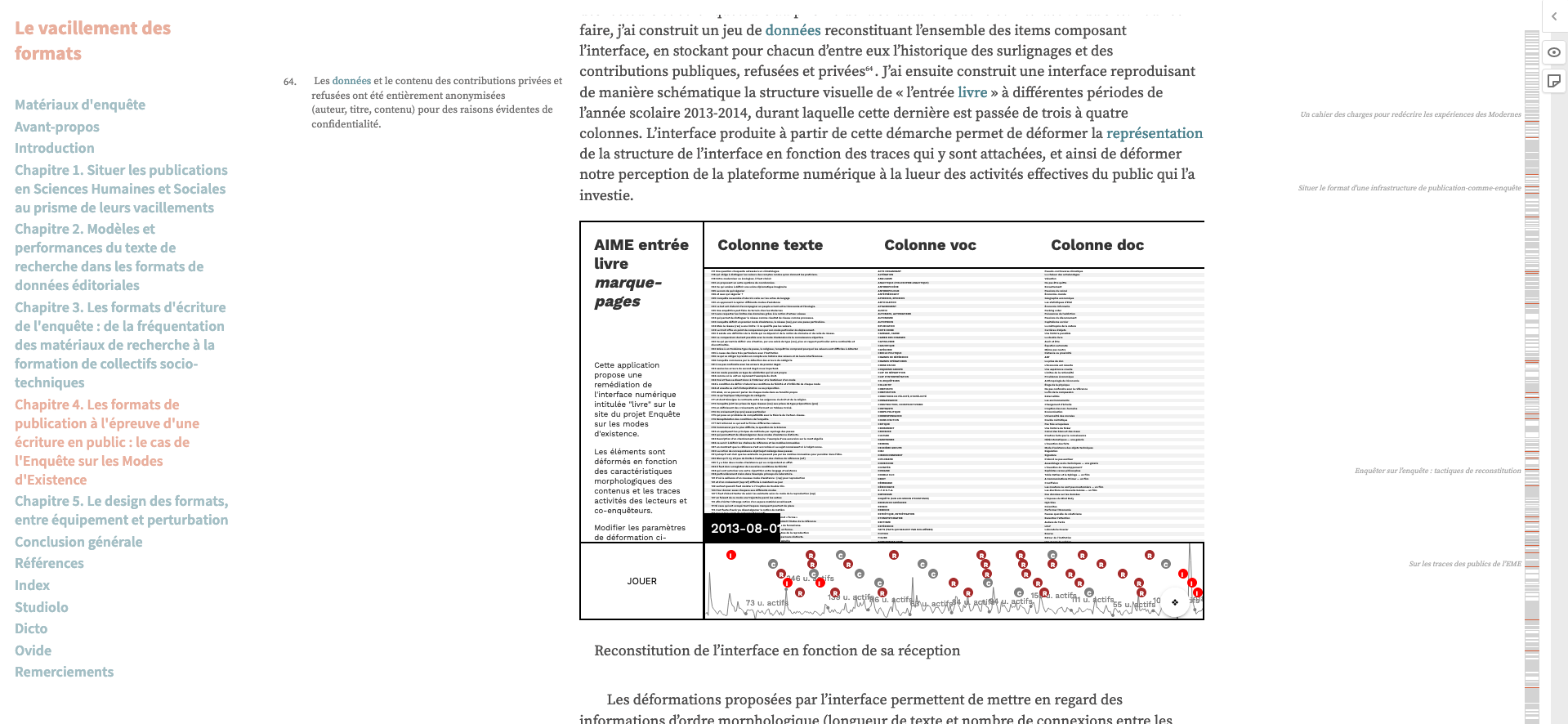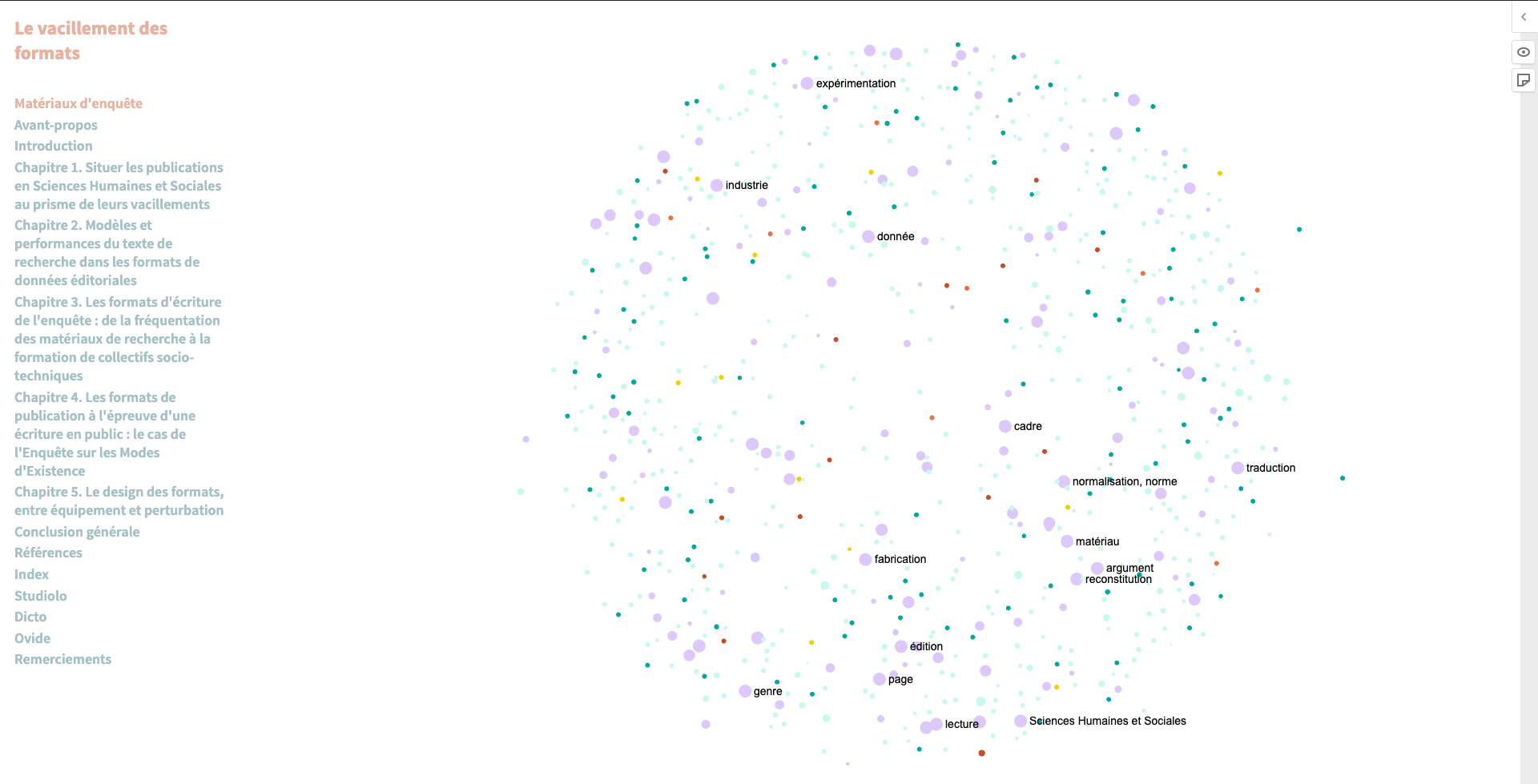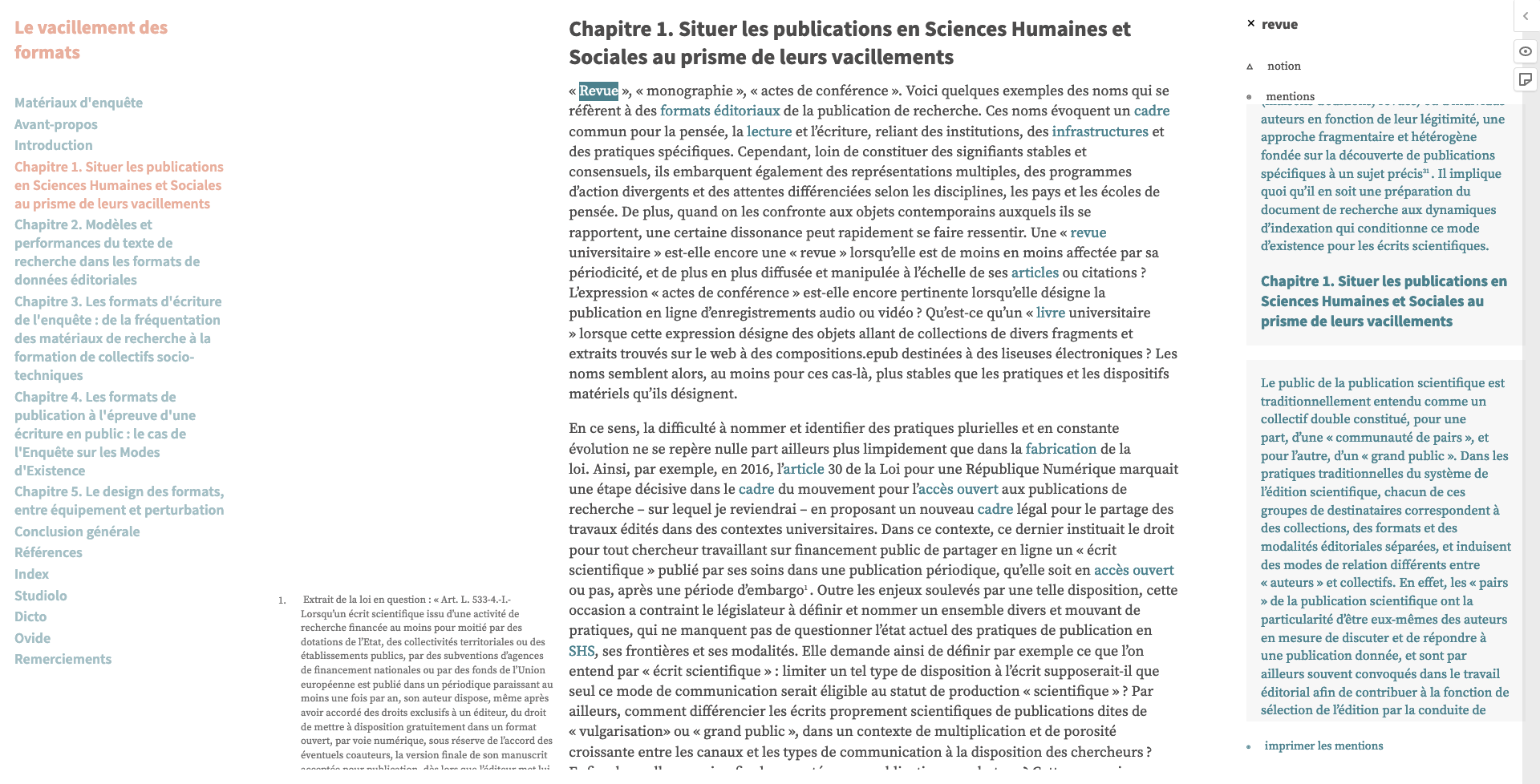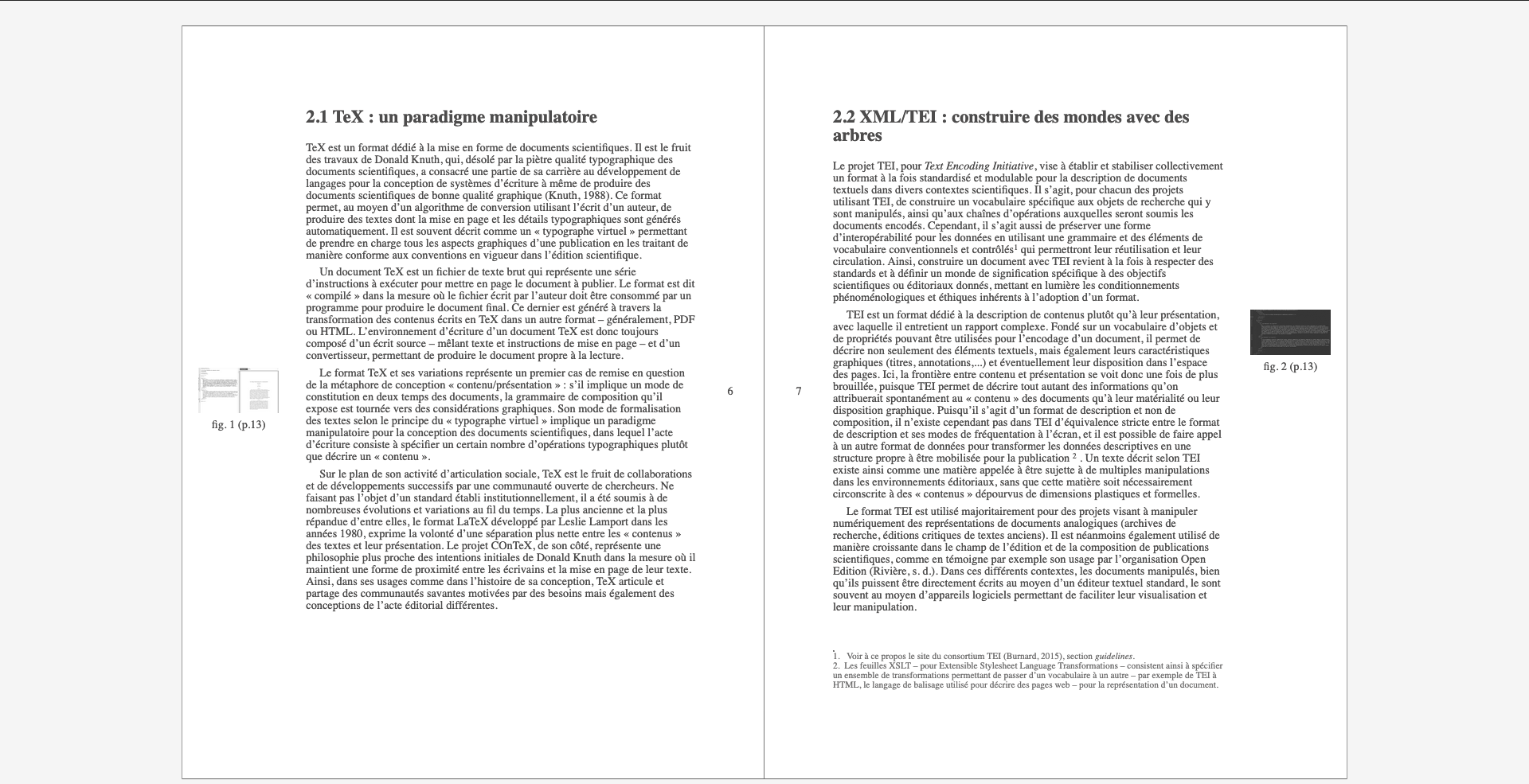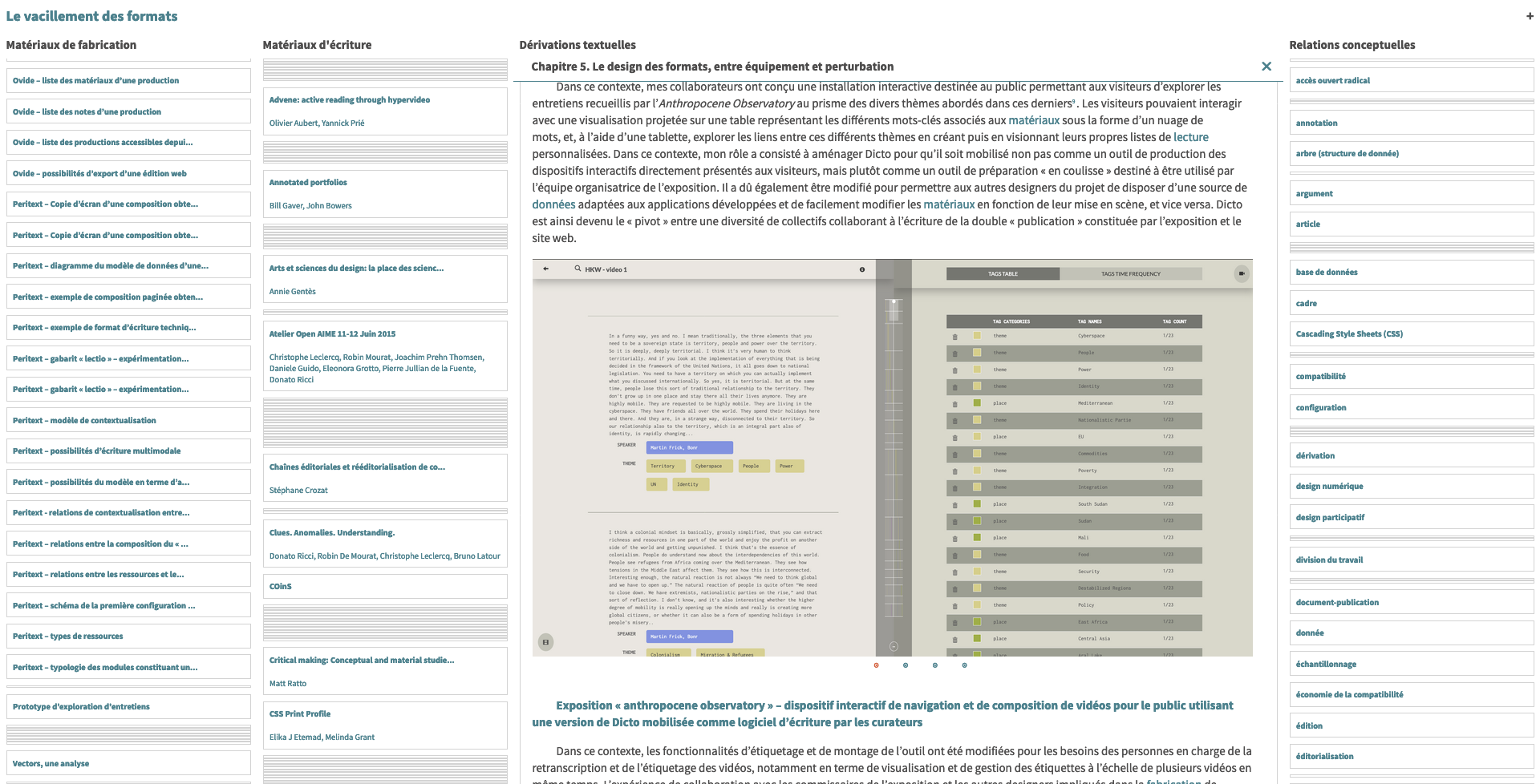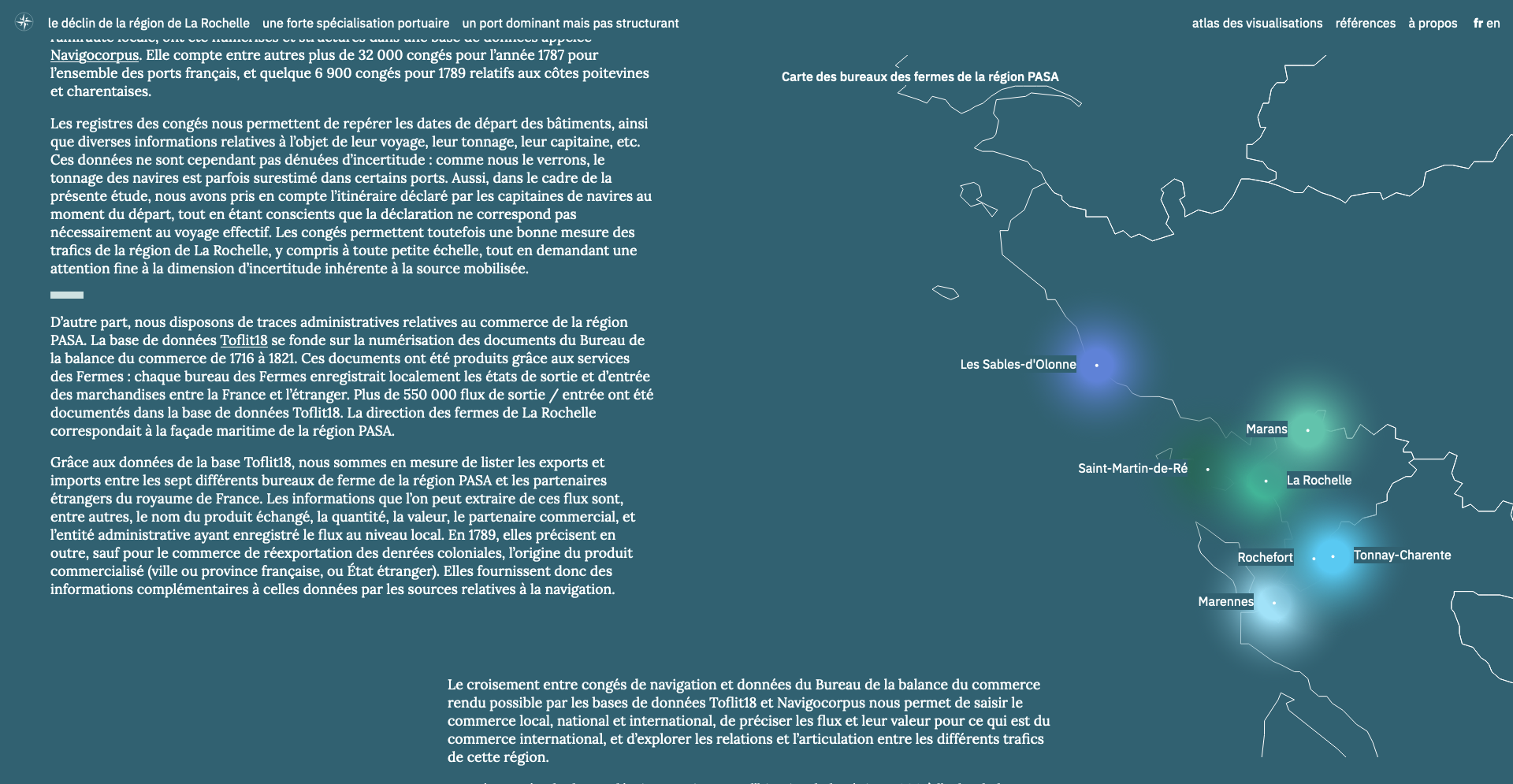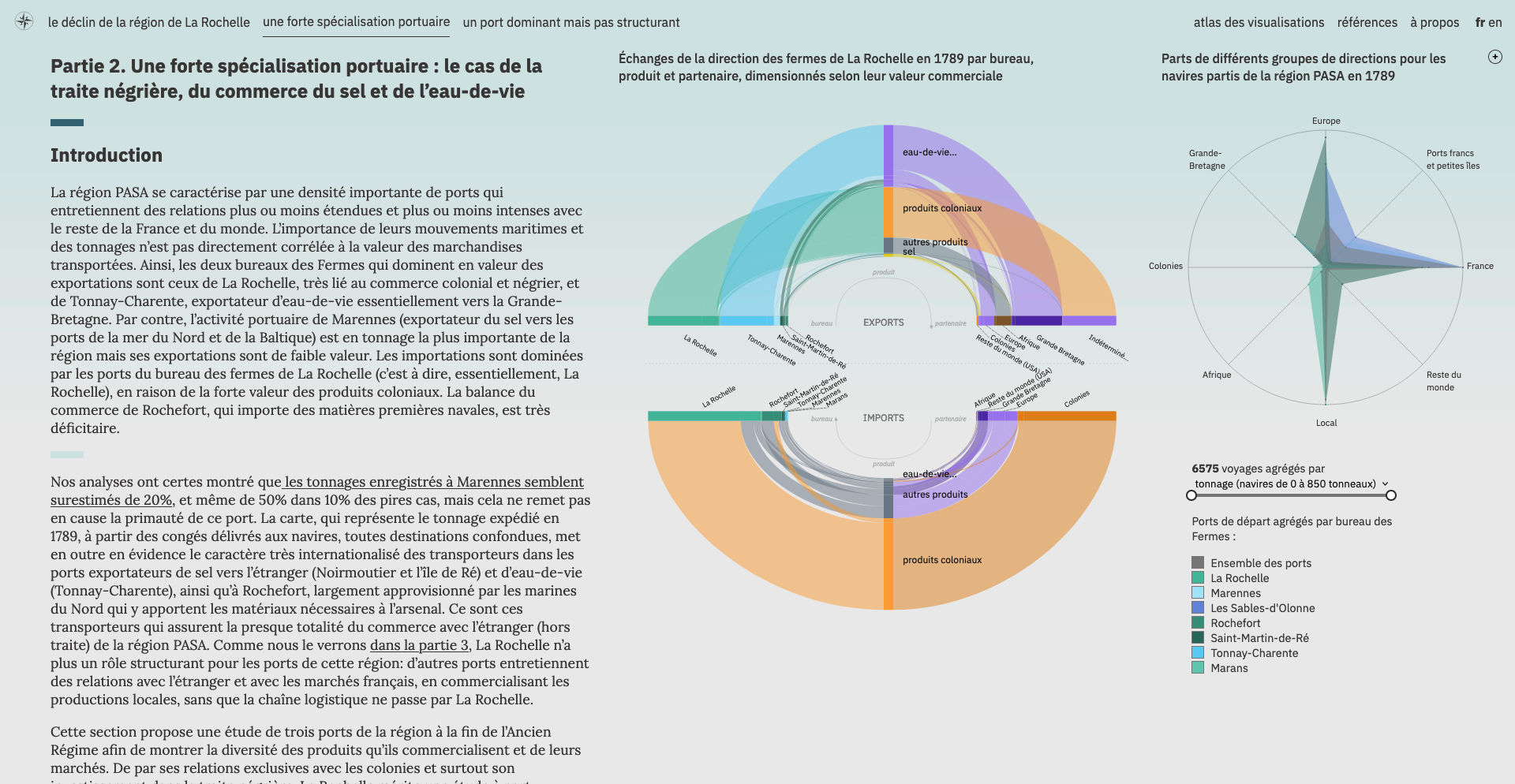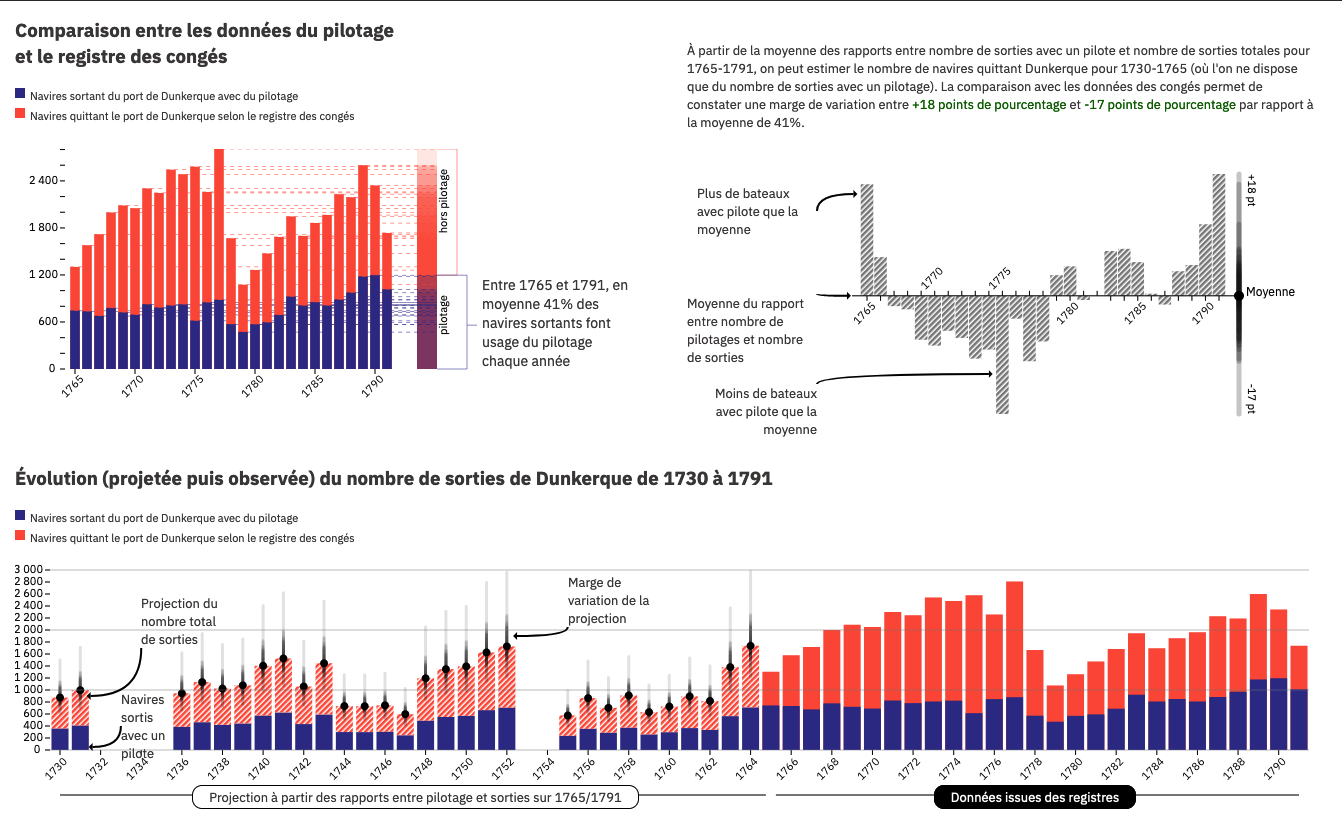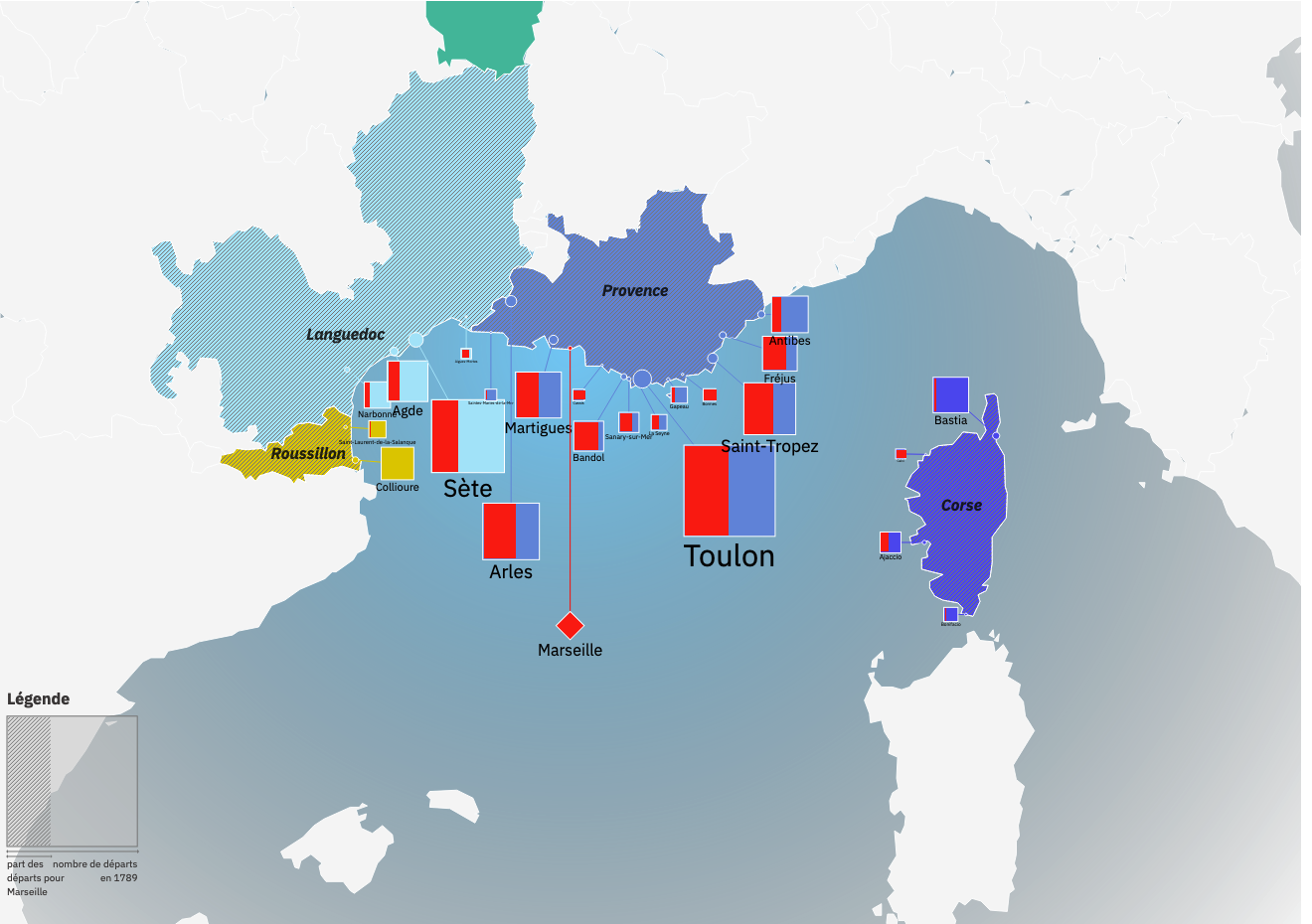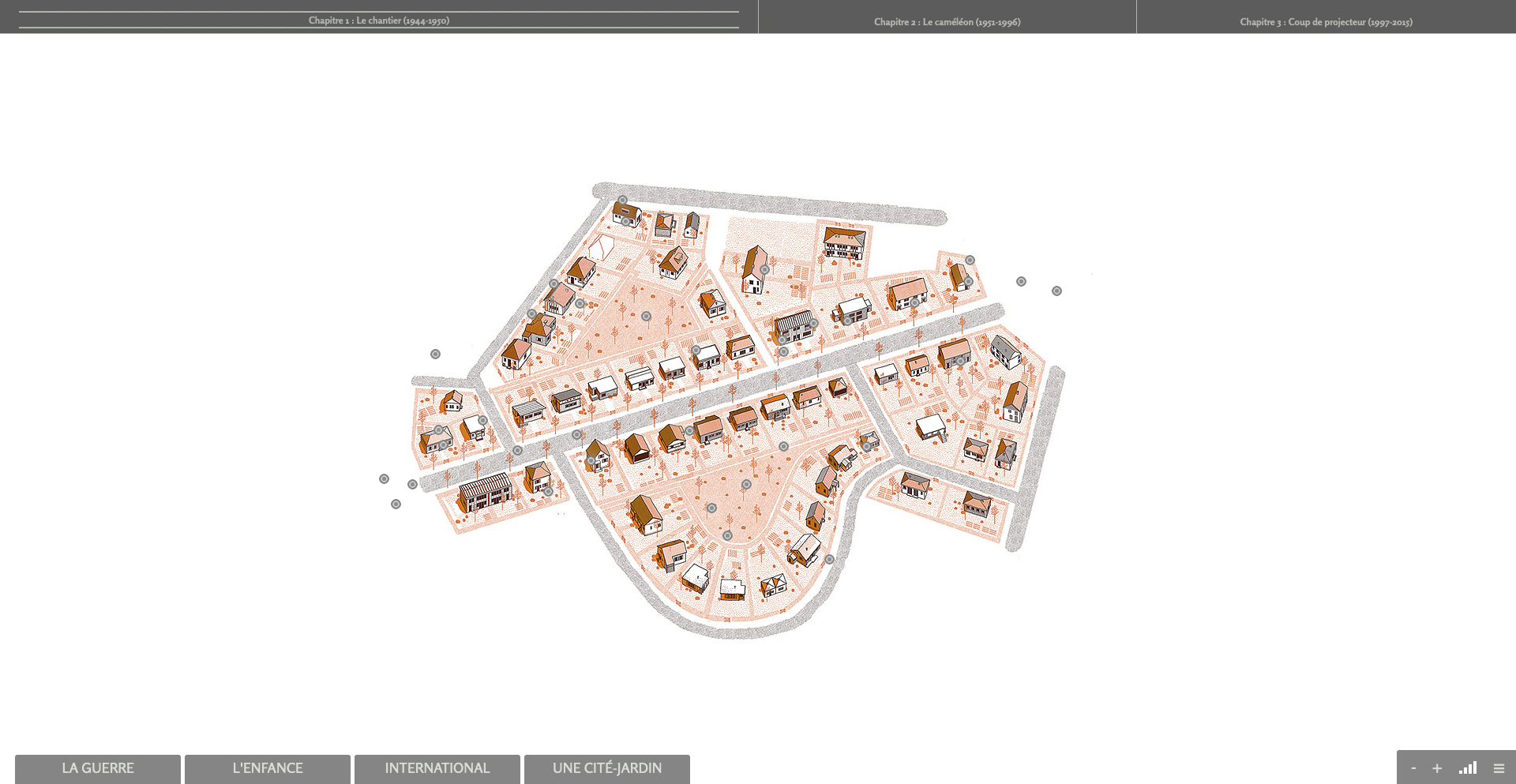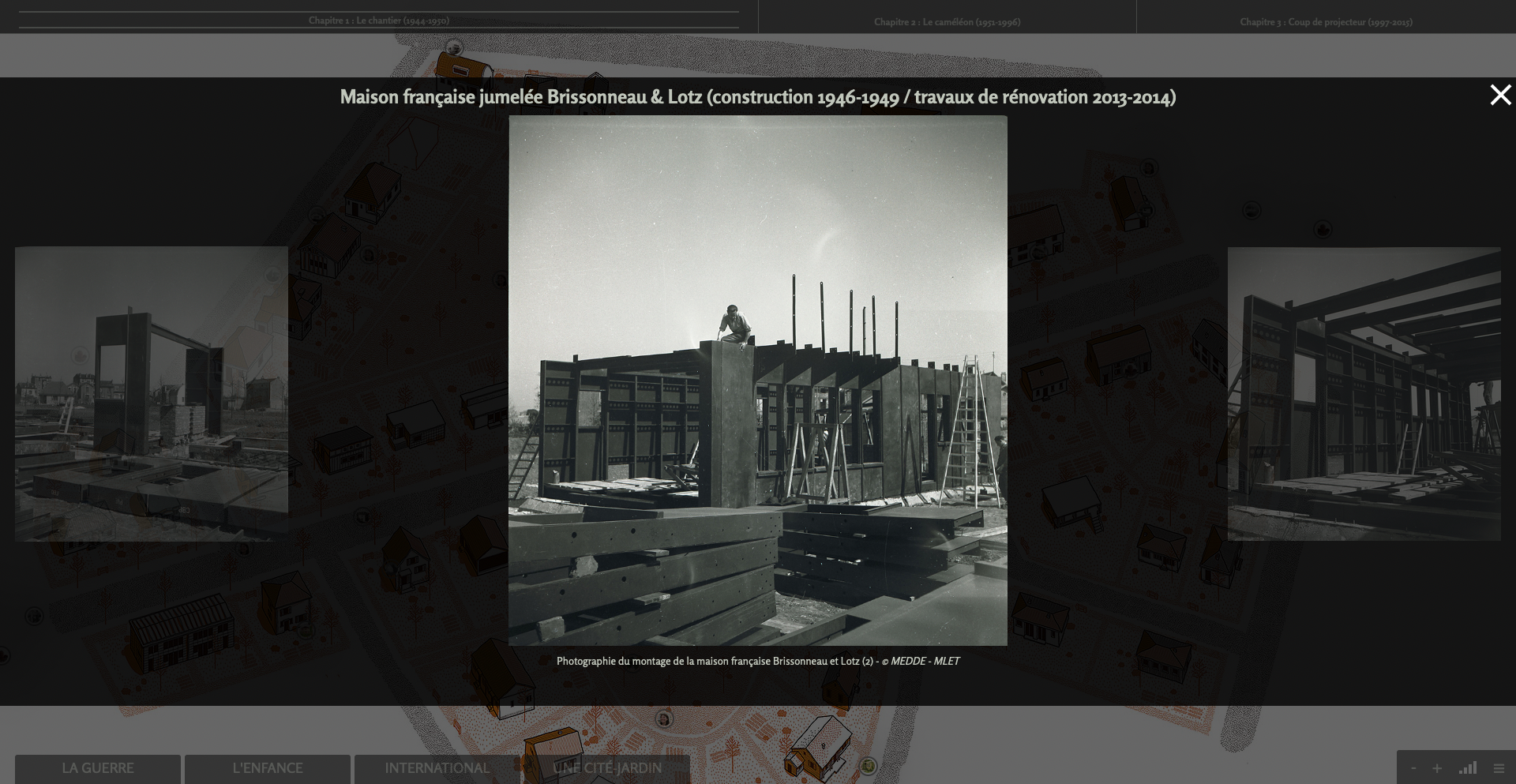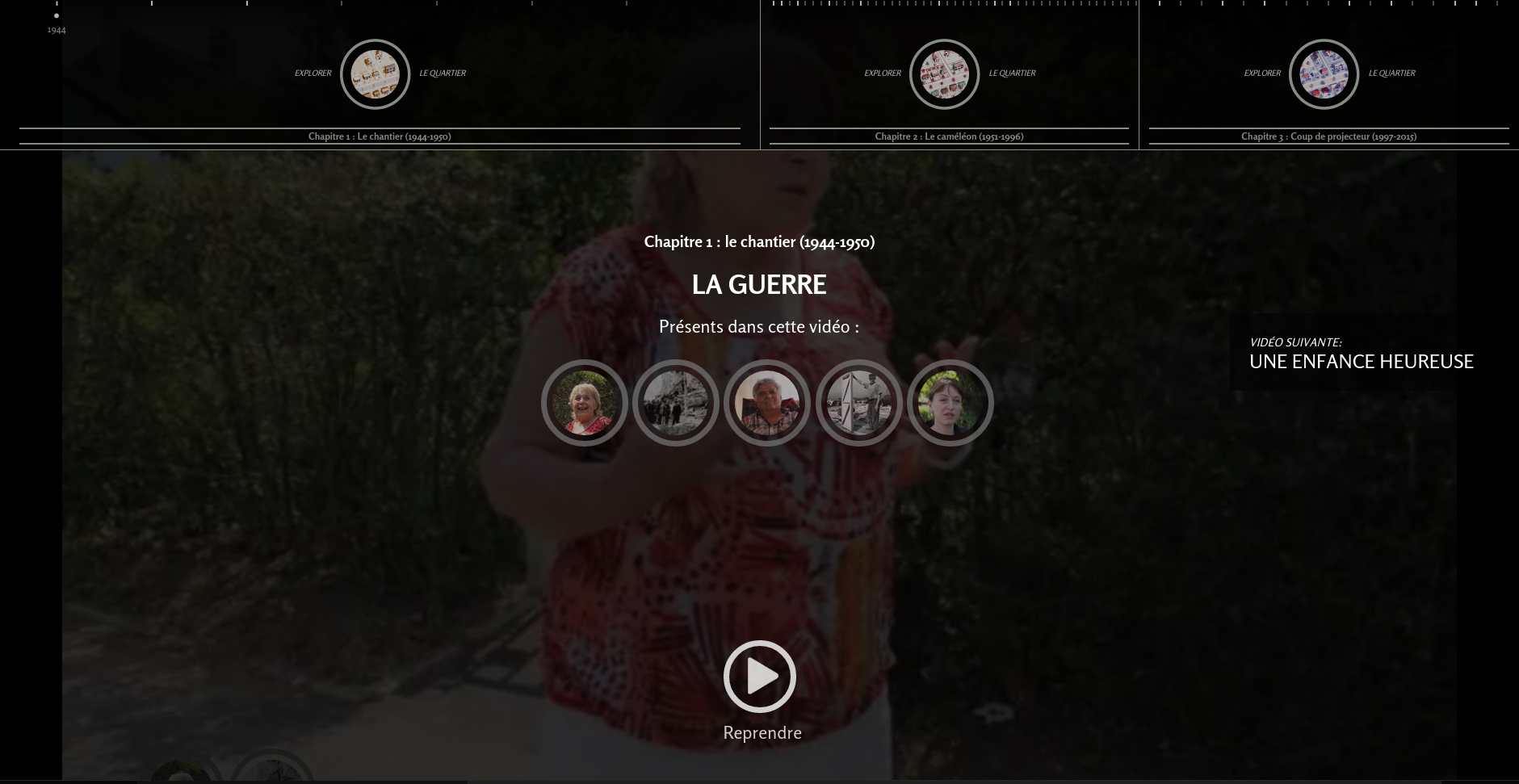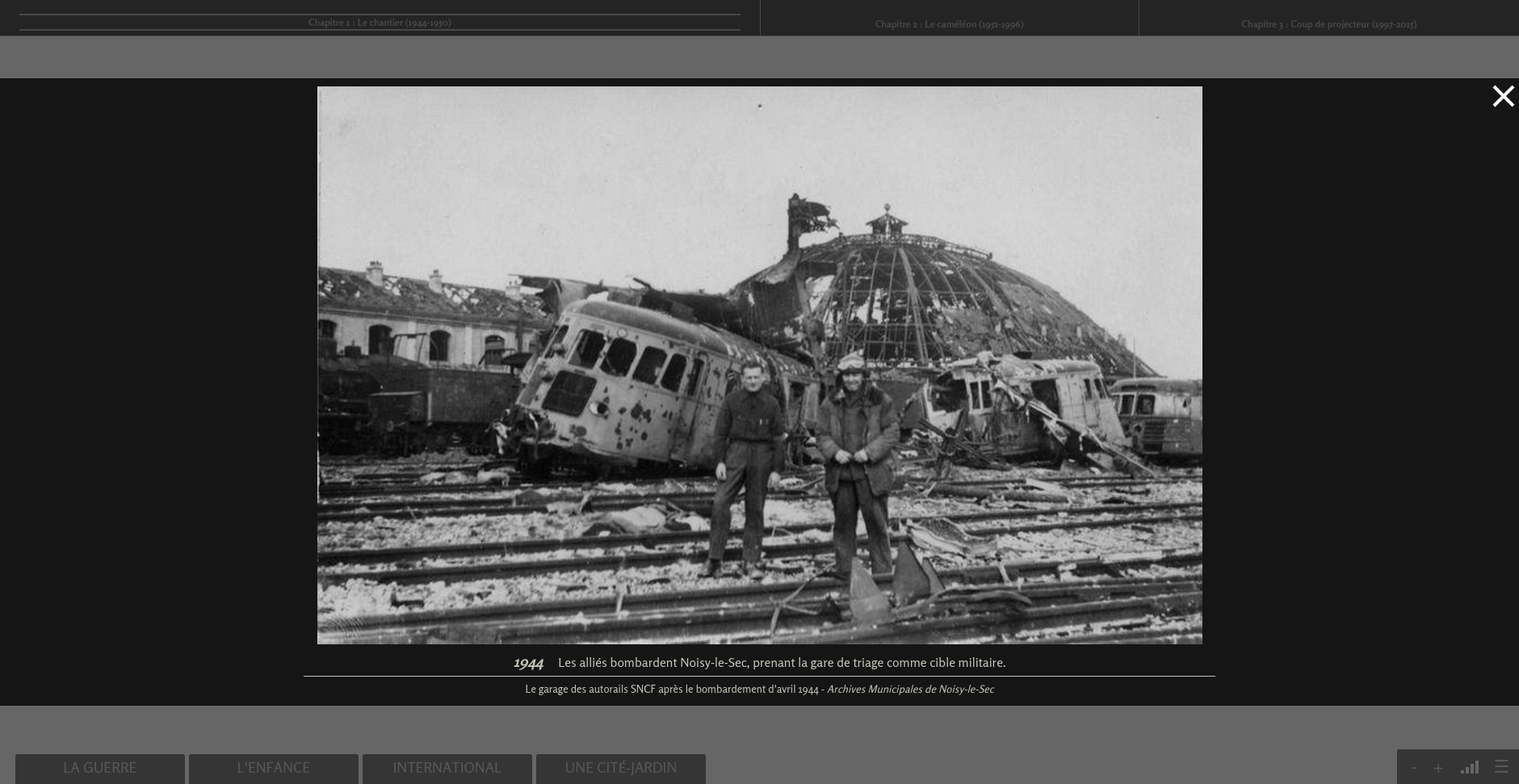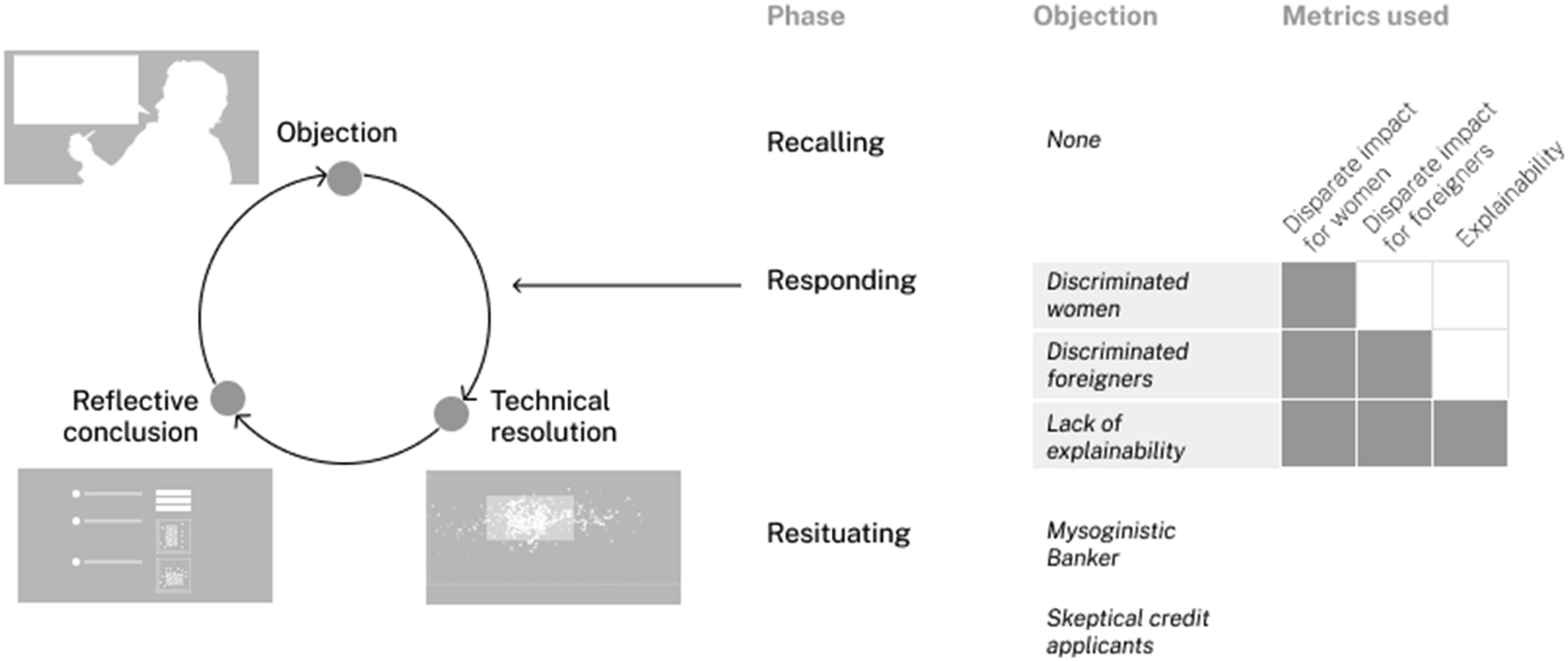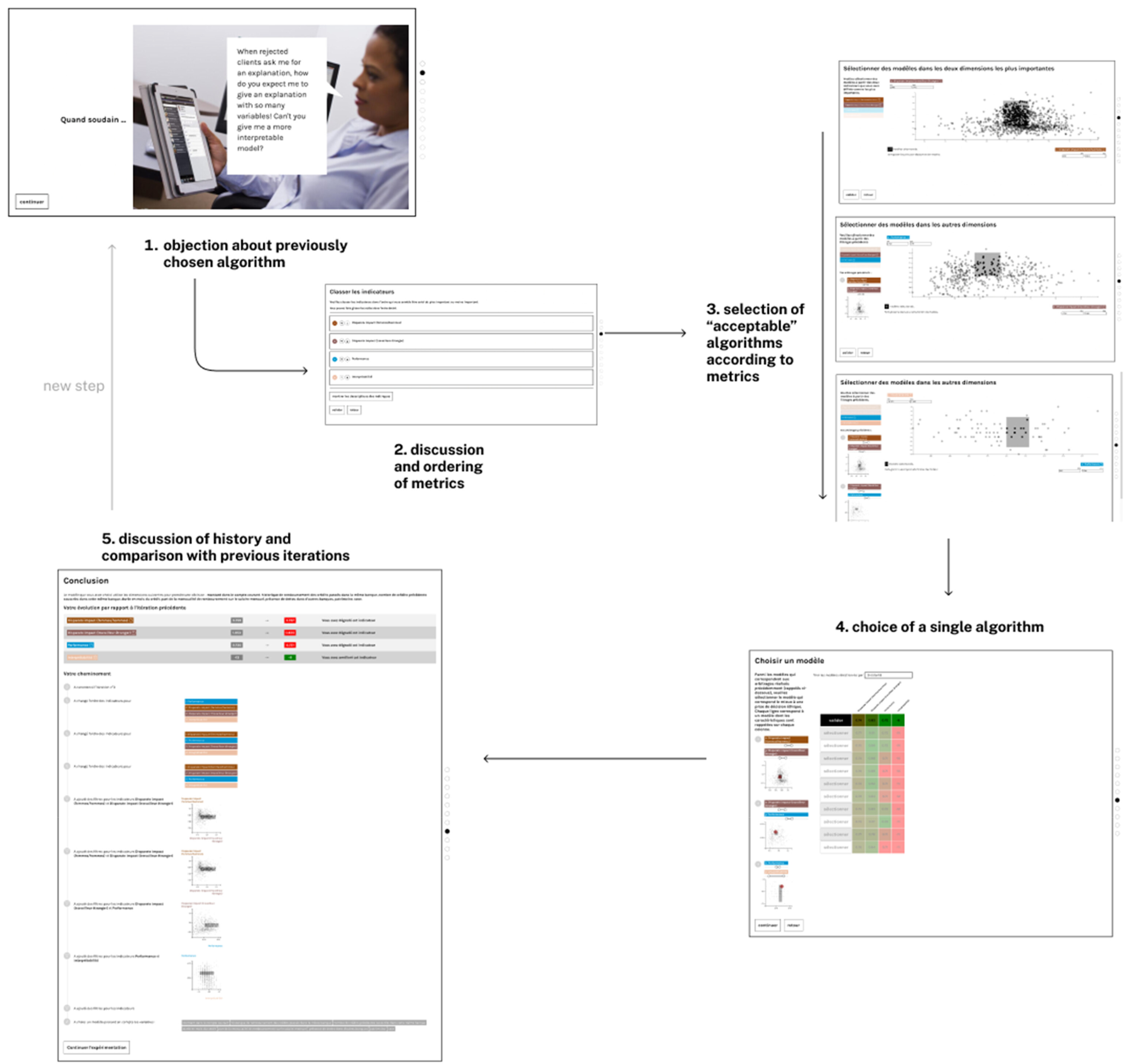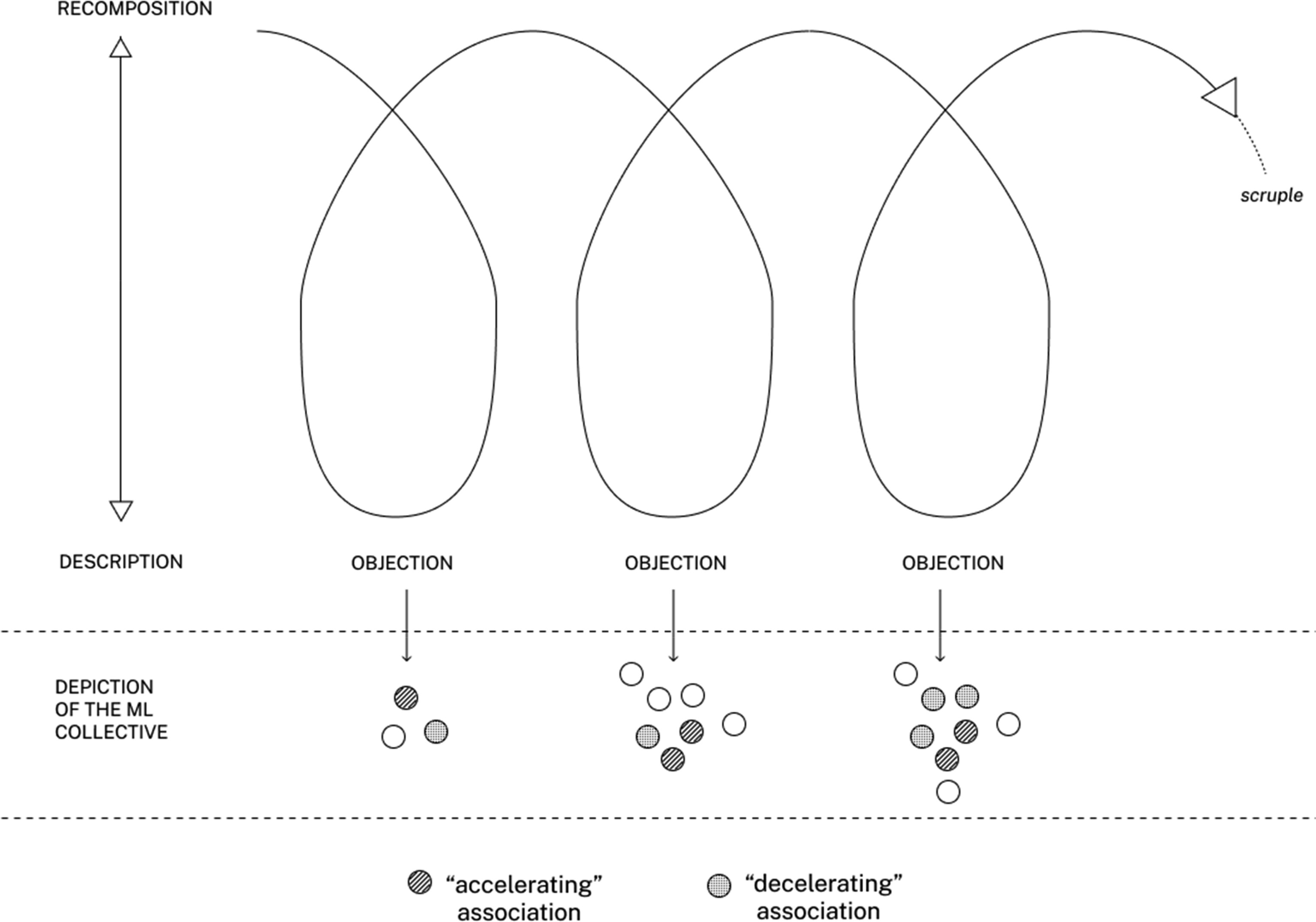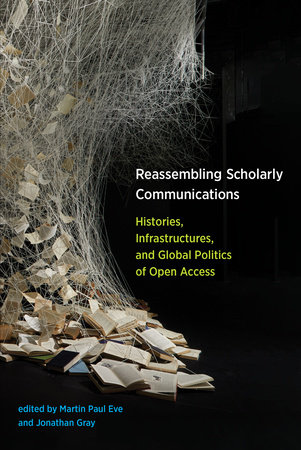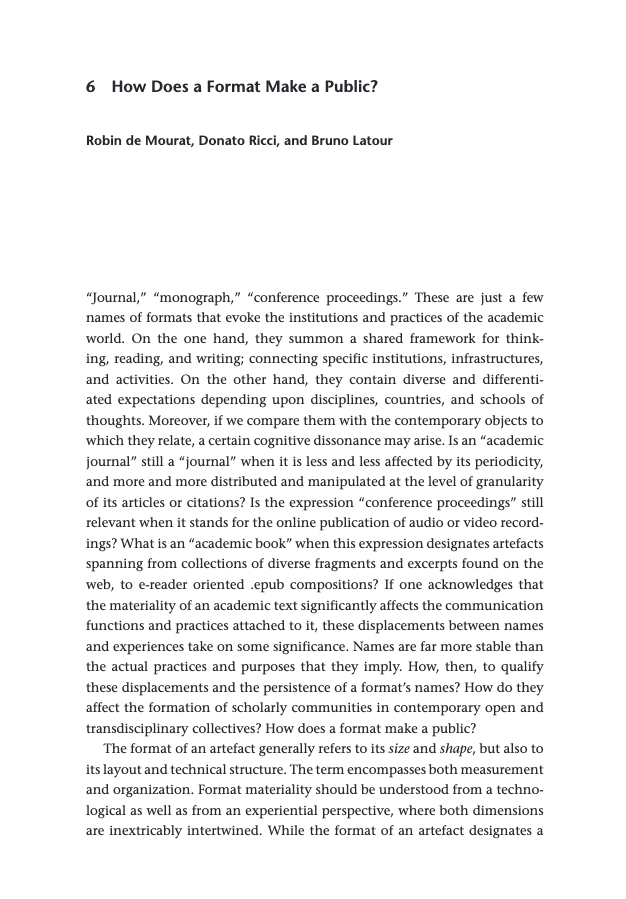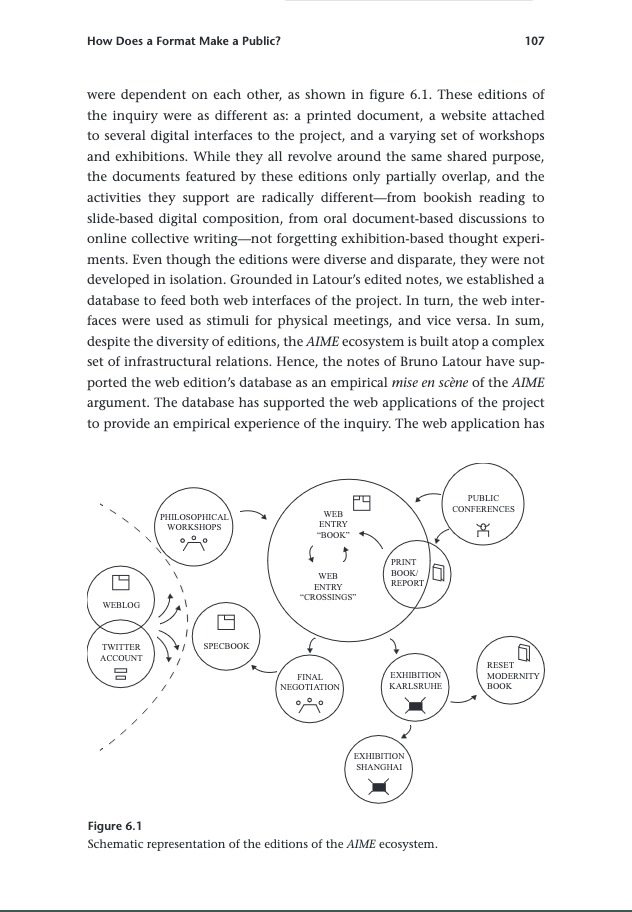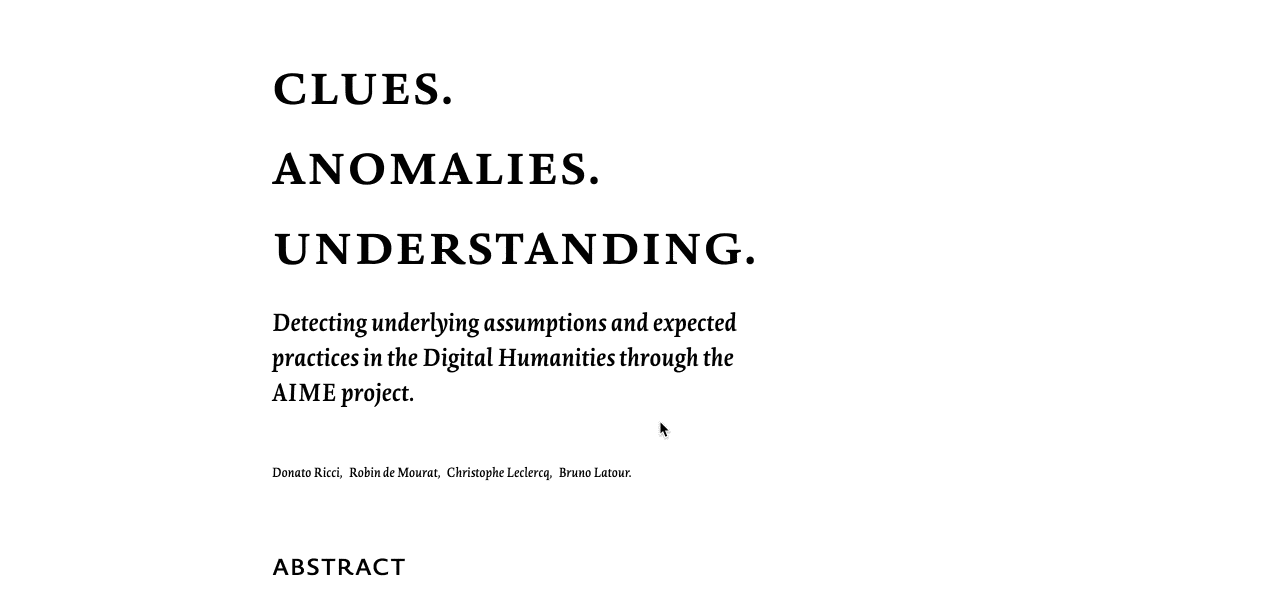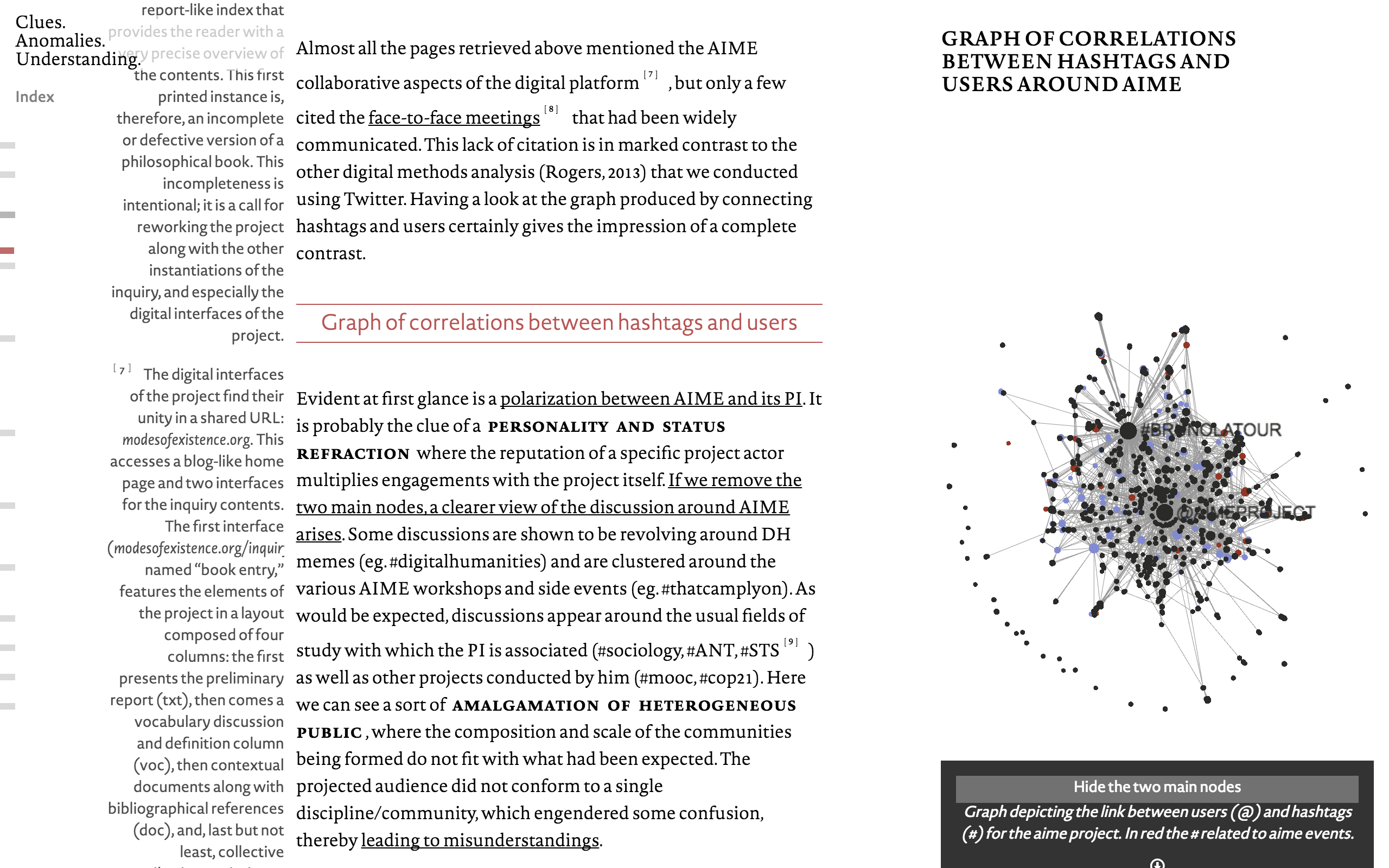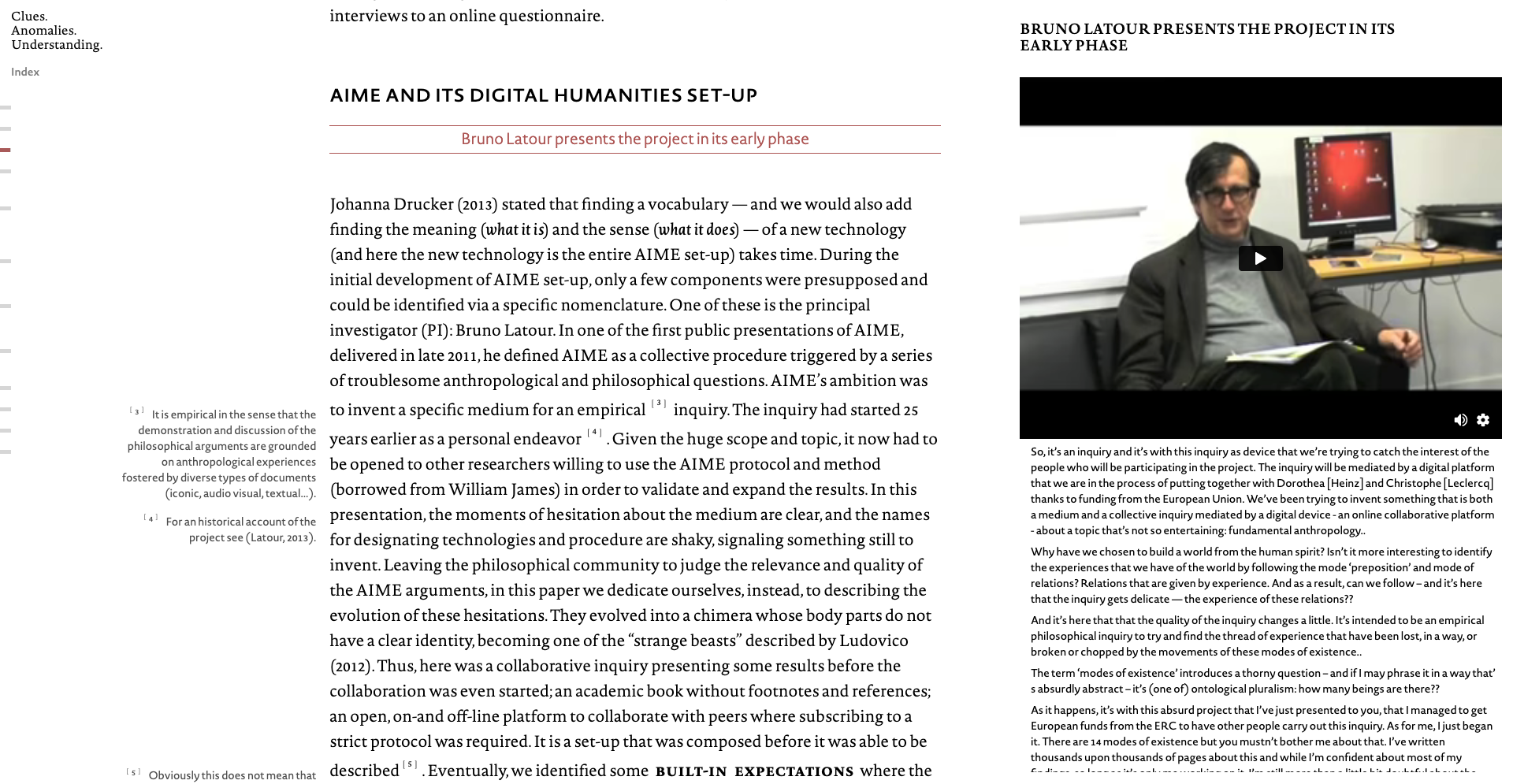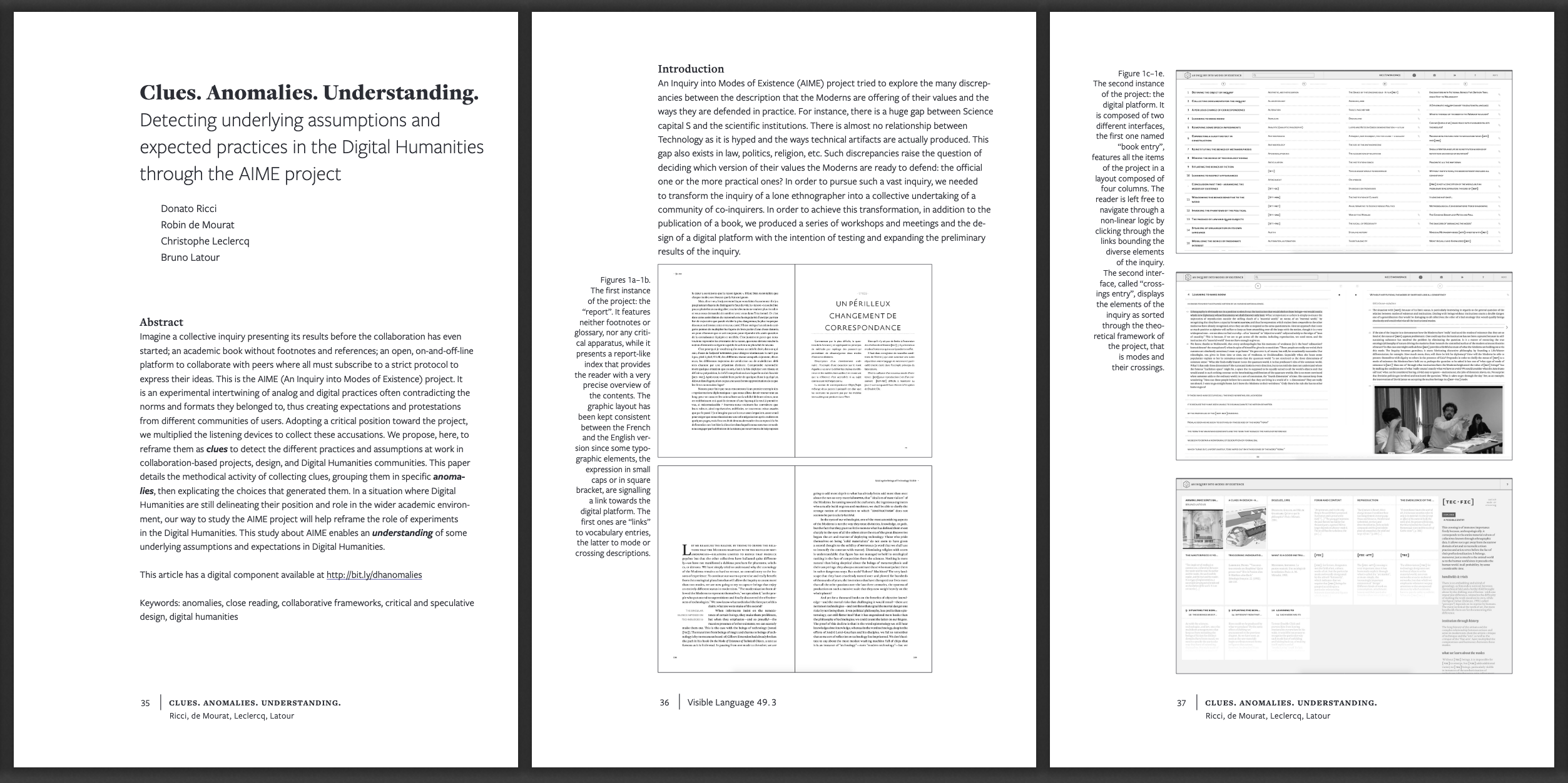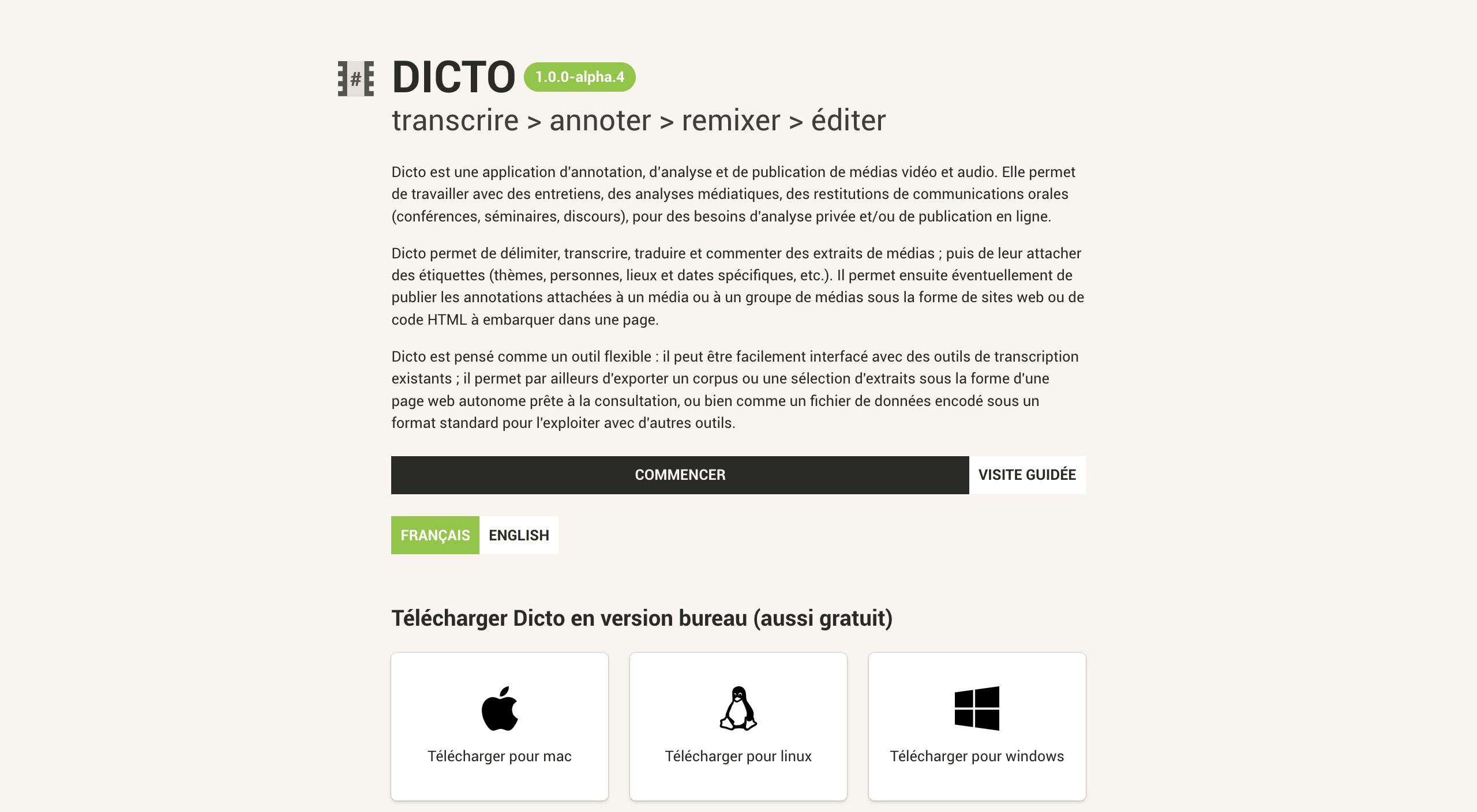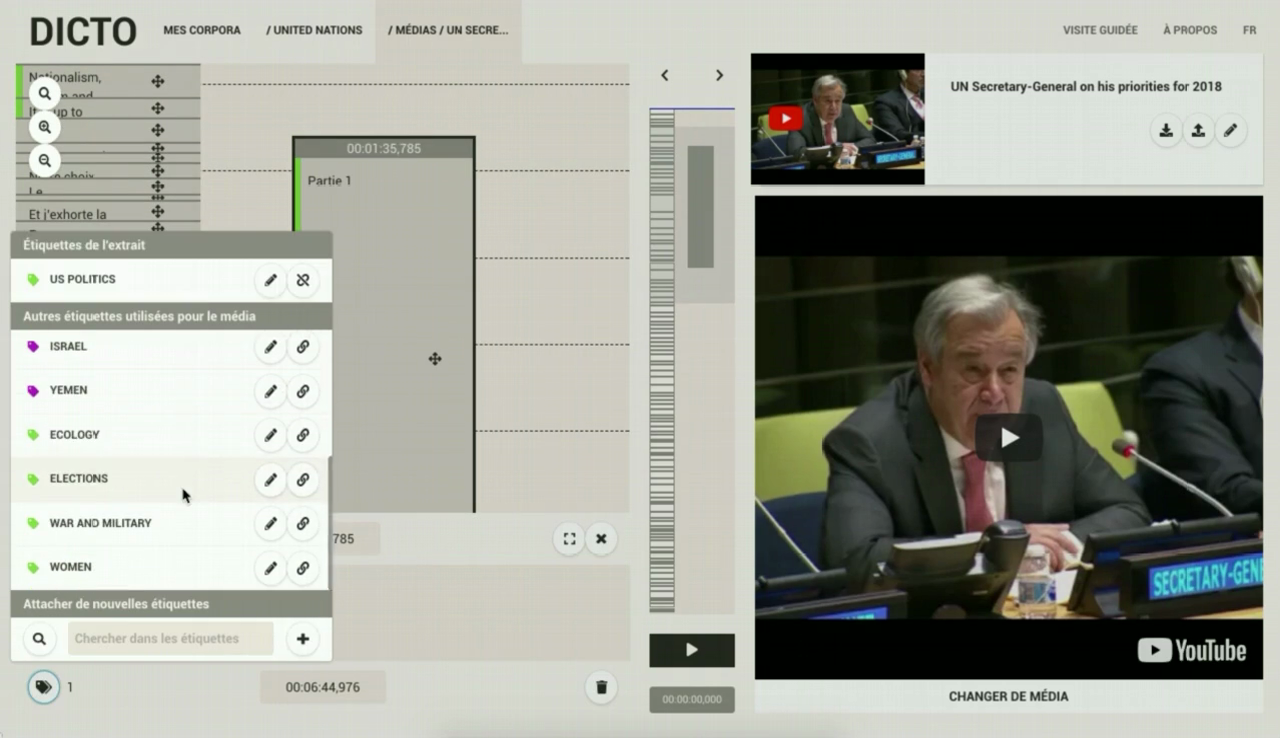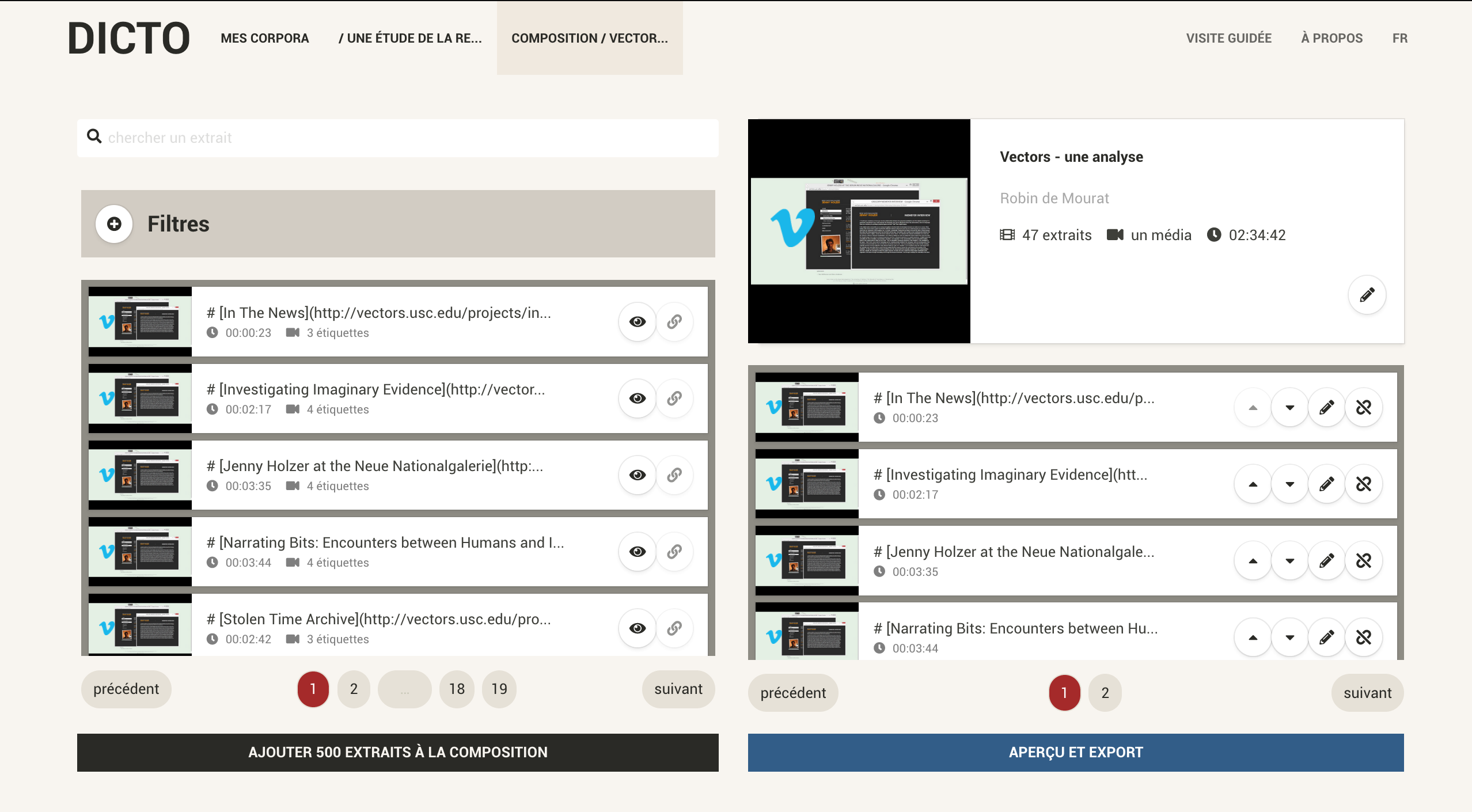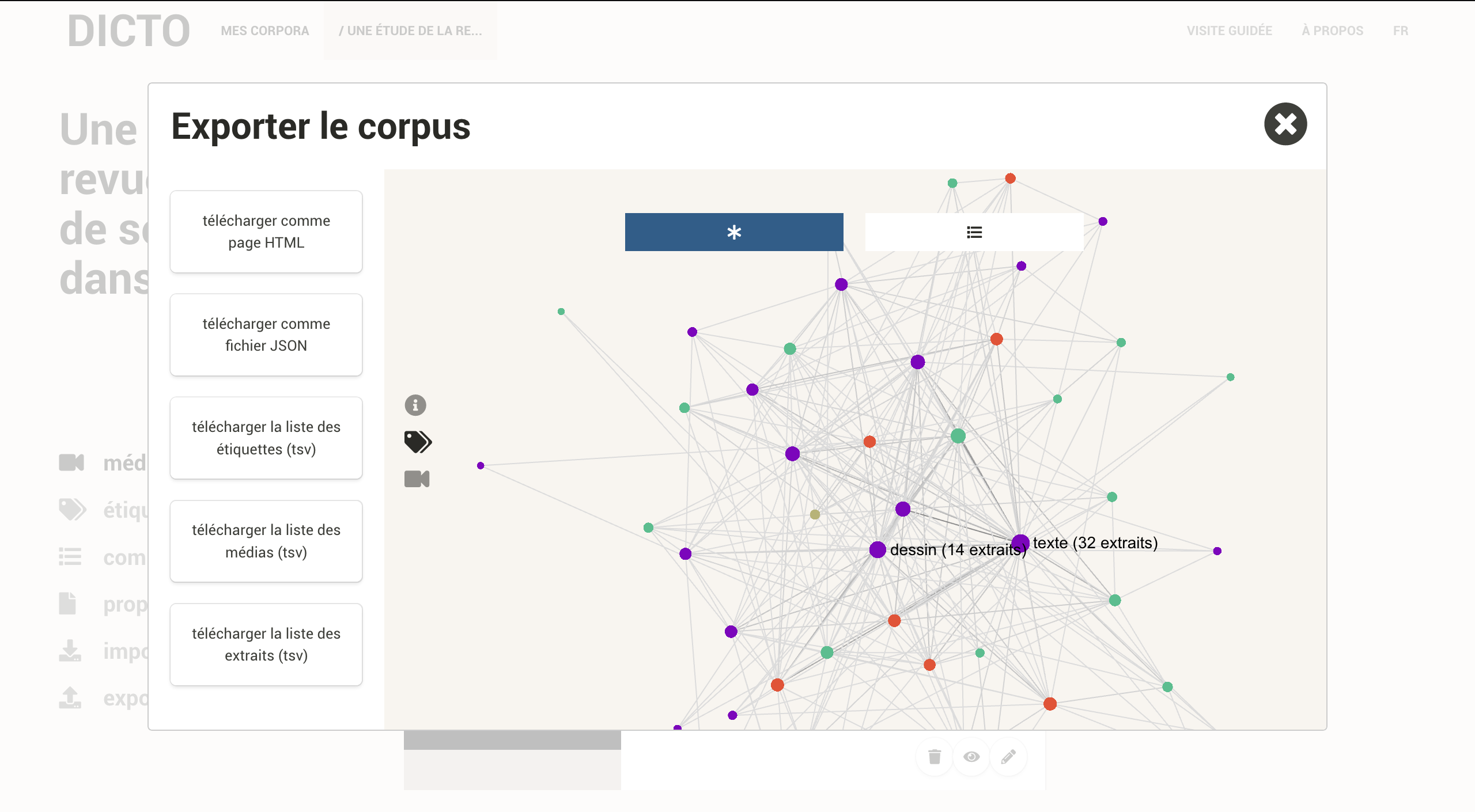Robin de Mourat
Je suis designer et chercheur au médialab de Sciences Po. Mes champs de recherche incluent les mutations des cultures du projet face aux crises environnementales, les nouvelles formes de sensibilité citoyenne développées à travers les cultures numériques et leurs marges, les enjeux politiques et épistémologiques des formats d'écriture de la recherche participative, ainsi que l'hybridation des méthodes des sciences sociales avec les pratiques expérimentales issues de la recherche contemporaine en design.
I am designer and researcher at médialab Sciences Po. His fields of research include the mutations of project cultures in the face of environmental crisis, new forms of citizen sensibility developed through digital cultures and their margins, the political and epistemological stakes of participatory research writing formats, and the hybridization of social science methods with experimental practices stemming from contemporary design research.
Sélection de travaux en français
-
Ce livre enquête aux confins du Grand Paris. Il propose une ethnographie d’un territoire de 32 hectares : la plaine Montceleux à Sevran en Seine-Saint-Denis. En 2017, le site devait accueillir un projet de piscine à vagues dédiée à la pratique du surf. Perçu comme une aberration écologique, un symbole de gentrification et d’exclusion sociale, l’équipement, d’emblée controversé, a finalement été abandonné.
Étudié ici depuis des disciplines et des pratiques multiples, ce lieu apparemment sans qualités se présente tour à tour comme un vide urbain, une terre de projets, une zone à planifier, un champ de banlieue, une friche dans la métropole, un commun à habiter. Prises ensemble, ces descriptions montrent à quel point un même endroit peut être représenté de manière radicalement différente selon ce à quoi nous prêtons attention et ce qui nous importe.
Telle une anti-étude d’impacts, cet ouvrage cherche, par la transformation du regard, à élargir le champ des possibles d’un terrain ordinaire pris dans la marche forcée de la métropolisation.
Crédits
- Conception, textes et iconographie : Robin de Mourat, Clémence Seurat et Thomas Tari
- Dessins et conception graphique : Sarah Garcin
- Cartes originales : L’atelier de cartographie de Sciences Po
-
La diffusion des technologies numériques dans les pratiques de recherche, ainsi que les mutations socio-professionnel les des mondes universitaires et éditoriaux du début du vingt-et-unième siècle, ont donné lieu à de multiples dé stabilisations dans les modalités d’enquête, d’écriture et d’édition impliquées par les activités de publication des chercheurs en Sciences Humaines et Sociales.
En écho à ces transformations, des démarches expérimentales diverses impliquant des collectifs interdisciplinaires dans l’élaboration de formats de publication inédits se sont développées. Ces démarches ont été en dialogue et parfois en friction avec les normes, les codes et les habitudes partagées constitutives de leurs horizons de pratique. Dans ce contexte, cette recherche porte sur les effets esthétiques, socio-techniques, méthodologiques et épistémologiques du dialogue entre pratiques conventionnel les et pratiques expérimentales de la publication en Sciences Humaines et Sociales.
À travers une démarche d’enquête en design articulant observation, écriture et fabrication via une série de dérivations, cette recherche vise ainsi à reconstituer le rôle de la matérialité dans la formation des collectifs de recherche contemporains.
-
Le programme de recherche ANR PORTIC a consisté à conduire trois études de cas en histoire de la navigation et de l'économie, sous forme d’articles en ligne accompagnés de visualisations interactives. La base documentaire de ces études de cas croise les données de la navigation, issues de la base des données Navigocorpus, avec celles de la Balance du Commerce, issues du programme TOFLIT18. Les trois études de cas ont été réalisées dans un contexte interdisciplinaire permettant de réunir historien•es, économistes, géomaticiennes, ingénieur•es de données, et designers d'information autour d'une réalisation commune.
Crédits
- Responsabilité scientifique du programme : Silvia Marzagalli
- Direction scientifique du programme : Silvia Marzagalli, Christine Plumejeaud, Robin de Mourat
- Responsabilité scientifique des études de cas : Robin de Mourat
- Design des visualisations : Robin de Mourat, Maxime Zoffoli, Paul Girard, Christine Plumejeaud, Cécile Asselin, Guillaume Brioudes
- Participant•es aux études de cas : Silvia Marzagalli, Cécile Asselin, Guillaume Brioudes, Alain Bouju, Loïc Charles, Guillaume Daudin, Géraldine Geoffroy, Paul Girard, Pauline Gourlet, Béatrice Mazoyer, Robin de Mourat, Benjamin Ooghe-Tabanou, Guillaume Plique, Christine Plumejeaud, Pierrick Pourchasse, Thierry Sauzeau, Héloïse Théro et Maxime Zoffoli.
Liens
- Commerce multi-échelles autour du port de La Rochelle au XVIIIe siècle
- Commerce, contrebande et ports francs : le cas de Dunkerque au XVIIIe siècle
- Prospérité et résilience du port de Marseille au XVIIIe siècle
- Site du programme de recherche PORTIC
- S'entendre. L'interdisciplinarité en pratique. Documentaire portant sur la confection de la troisième étude de cas, réalisé par Aymeric Poidevin et Fabien Luszezyzyn.
-
La cité d'expérience de Noisy-le-Sec, site expérimental de maisons préfabriquées créé à la fin de la Seconde Guerre mondiale, fait aujourd'hui l'objet d'un patrimoine controversé. Le quartier a été inscrit à l'inventaire supplémentaire des monuments historiques en 2000, interrogeant dramatiquement son avenir. Une équipe pluridisciplinaire (un designer, un scénariste multimédia et un doctorant) a été constituée pour raconter cette histoire à travers un récit basé sur une vue interactive du quartier, des images d'archives de maisons singulières et des interviews vidéo d'experts et d'habitants.
Ce projet soulève une question méthodologique dans le domaine des humanités numériques : comment reformuler un processus de recherche pour un public non initié au moyen d'artefacts numériques ? Comment utiliser différents types de médias et de données pour raconter une controverse contemporaine ? Une Balade au Merlan s'inscrit dans le prolongement de la thèse de Caroline Bougourd.
Crédits
- Entretiens et documentation : Caroline Bougourd
- Écriture et réalisation : Caroline Bougourd, Loup Cellard, Robin de Mourat
- Production : Loup Cellard
- Direction artistique : Robin de Mourat
- Direction technique et développement web : Jérôme Tailhades
- Illustrations: Delphine Durocher
- Prise de son et design sonore : Alexandre Ferreira
- Images et photographie : Clémence Sgarbi, Guillaume Zekkout
- Montage : Tony Gagniarre,Loup Cellard, Robin de Mourat
- En co-production avec Nicéphore Cité - coordination Grabriel Bloch
Selected works in english
-
As the number of ethical incidents associated with Machine Learning (ML) algorithms increases worldwide, many actors are seeking to produce technical and legal tools to regulate the professional practices associated with these technologies. However these tools, generally grounded either on lofty principles or on technical approaches, often fail at addressing the complexity of the moral issues that ML-based systems are triggering. They are mostly based on a ‘principled’ conception of morality where technical practices cannot be seen as more than mere means to be put at the service of more valuable moral ends.
We argue that it is necessary to localise ethical debates within the complex entanglement of technical, legal and organisational entities from which ML moral issues stem. To expand the repertoire of the approaches through which these issues might be addressed, we designed and tested an interview protocol based on the re-enactment of data scientists’ daily ML practices. We asked them to recall and describe the crafting and choosing of algorithms.
Then, our protocol added two reflexivity-fostering elements to the situation: technical tools to assess algorithms’ morality, based on incorporated ‘ethicality’ indicators; and a series of staged objections to the aforementioned technical solutions to ML moral issues, made by factitious actors inspired by the data scientists’ daily environment. We used this protocol to observe how ML data scientists uncover associations with multiple entities, to address moral issues from within the course of their technical practices. We thus reframe ML morality as an inquiry into the uncertain options that practitioners face in the heat of technical activities. We propose to institute moral enquiries both as a descriptive method serving to delineate alternative depictions of ML algorithms when they are affected by moral issues and as a transformative method to propagate situated critical technical practices within ML-building professional environments.
Credits
- Context of research (Ph.D. thesis) : Jean-Marie John Matthews
- Research protocol design : Jean-Marie John Matthews, Robin de Mourat, Donato Ricci, Maxime Crépel
- Data preparation : Jean-Marie John Matthews
- Design and development of the experimental interview elicitation support : Robin de Mourat
- Interviews conduct and retranscription : Jean-Marie John Matthews, Maxime Crépel
- Interviews analysis : Jean-Marie John Matthews, Maxime Crépel, Robin de Mourat, Donato Ricci
- Article writing : Robin de Mourat, Donato Ricci, Jean-Marie John Matthews, Maxime Crépel
Links
-
The writing of web publications mixing data visualization and textual prose opens novel opportunities for connecting evidence, arguments and narrative in social sciences communities. Such a practice poses a variety of challenges in terms of website design and development ; but also and maybe more importantly, it asks for experimenting specific workflows for coordinating a variety of expertises ranging from social sciences disciplines (history, sociology, etc.) to data science, information design and web-related skills. It also reconfigures, for the research processes themselves, the relationships between activities of (data-related) enquiry and (communication-oriented) writing, creating a renewed space for discovery, invention and verification for the data sustaining a given argument or narrative.
Relying on recent experiments in making collective digital publications grounded in sociology of technology (https://medialab.github.io/carnet-algopresse/#/publication/en) and history of economy (https://medialab.github.io/portic-storymaps-2021/), this talk accounts for the diverse challenges arising from such activities of “data visualization-driven writing”, and some strategies we used to cope with them. It describes and compares the technical and methodological workflows we developed in order to simultaneously develop text, datasets and visualizations, taking into account a variety of aims, data materials, and distribution of skills. Doing so, it advocates for an extended understanding of the notion of “academic writing”, encompassing the practices of writing software, data and diagrams. Such an extended understanding, we argue, is necessary to design and develop writing workflows allowing to foster a multimodal and scientifically productive dialogue between these heterogeneous practices, taking full advantage of the web publication format as a research situation.
Links
-
“Journal,” “monograph,” “conference proceedings.” These are just a few names of formats that evoke the institutions and practices of the academic world. On the one hand, they summon a shared framework for think- ing, reading, and writing; connecting specific institutions, infrastructures, and activities. On the other hand, they contain diverse and differentiated expectations depending upon disciplines, countries, and schools of thoughts. Moreover, if we compare them with the contemporary objects to which they relate, a certain cognitive dissonance may arise. Is an “academic journal” still a “journal” when it is less and less affected by its periodicity, and more and more distributed and manipulated at the level of granularity of its articles or citations?
Credits
- Book edition: Martin Paul Eve, Jonathan Gray, MIT Press
- Chapter: Robin de Mourat, Donato Ricci, Christophe Leclercq, Bruno Latour
-
Software design and development within interdisciplinary research teams is a specific activity which closely associates makers and practitioners in the equipment of experimental research methods and practices. This closeness allows practitioners to tackle research endeavours’ specific requirements, such as understanding the methodological assumptions encoded within the tools. It also induces a specific relationship between “makers” and their publics of “users” : a non-commercial, situated and case-based crafting process, implying shifting roles and complex decision making. How does this peculiar context affect the design and valorization practices around open research tools and their evolution ? What are the benefits and difficulties of such settings, in terms of work organization, pedagogical approaches, and scientific methodology ? What can be shared for other contexts such as activism or journalism ?
Grounding on the presentation of several case studies of research tools’ design and development elaborated at the médialab of Sciences Po, this talk will offer an account of how an interdisciplinary research environment affects and dialogs with established methods of design (“participative design”, “user experience research”), development (“agile methods”), and tool valorization and socialization.
Credits
- Preparation and preliminary discussions: Audrey Baneyx and Robin de Mourat
- Visual supports making, talk writing and performance: Robin de Mourat
Links
-
Imagine a collective inquiry presenting its results before the collaboration has even started; an academic book without footnotes and references; an open, on-and-off-line platform to collaborate with peers where all must subscribe to a strict protocol to express their ideas. This is the AIME (An Inquiry into Modes of Existence) project. It is an experimental intertwining of analog and digital practices often contradicting the norms and formats they belonged to, thus creating expectations and protestations from different communities of users. Adopting a critical position toward the project, we multiplied the listening devices to collect these accusations. We propose, here, to reframe them as clues to detect the different practices and assumptions at work in collaboration-based projects, design, and Digital Humanities communities.
This paper details the methodical activity of collecting clues, grouping them in specific anomalies, then explicating the choices that generated them. In a situation where Digital Humanities are still delineating their position and role in the wider academic environment, our way to study the AIME project will help reframe the role of experiments in the Digital Humanities. This study about AIME enables an understanding of some underlying assumptions and expectations in Digital Humanities.
Credits
- Article writing: Donato Ricci, Robin de Mourat, Christophe Leclercq, Bruno Latour
- Visualizations and graphic design: Donato Ricci, Robin de Mourat
- Interaction design, writing system design, web development: Robin de Mourat
- Interviews conduct, retranscription and analysis: Robin de Mourat
- Data preparation and analysis: Robin de Mourat, Pierre Julian de la Fuente, Christophe Lerclerq, Donato Ricci
-
Dicto is an application made for the annotation, analysis and publication of audio and video media. It allows to work with interviews, videos analysis, or oral communication restitutions, for private analysis and/or online publishing contexts.
Dicto allows to annotate audio and video documents with transcriptions, translations and other comments ; to tag them with themes, people, places and dates ; and possibly to publish them as websites or embeddable html code.
Dicto is designed as a flexible tool: it can be connected to other transcription tools ; it also allows to export a corpus or a selection of excerpts as an autonomous web page ready for consultation, or as data files encoded in standard formats allowing further work with other tools.
Credits
- Inception and valorization: Robin de Mourat, Donato Ricci, Nicolas Thély
- Design, development & maintenance: Robin de Mourat
Links
